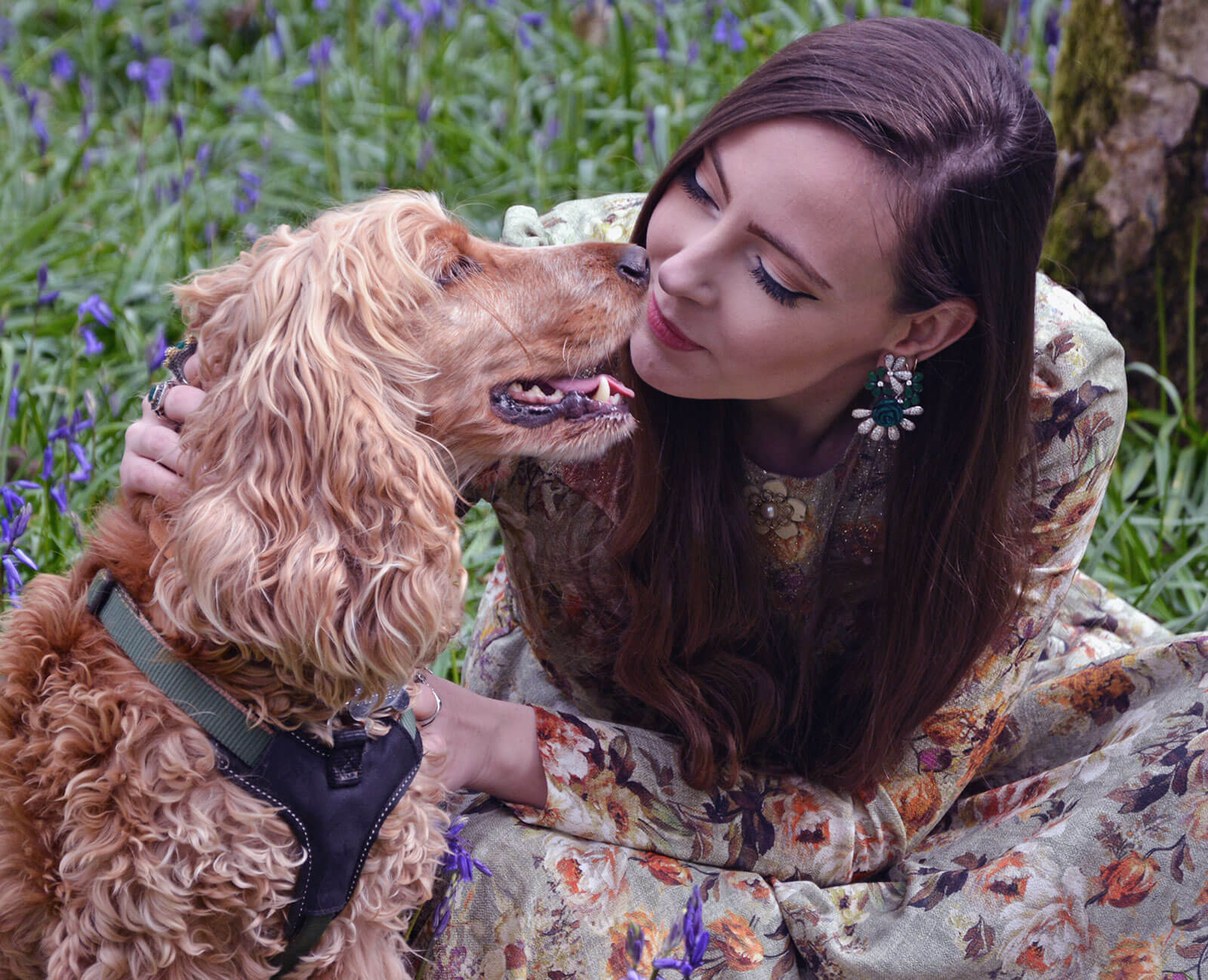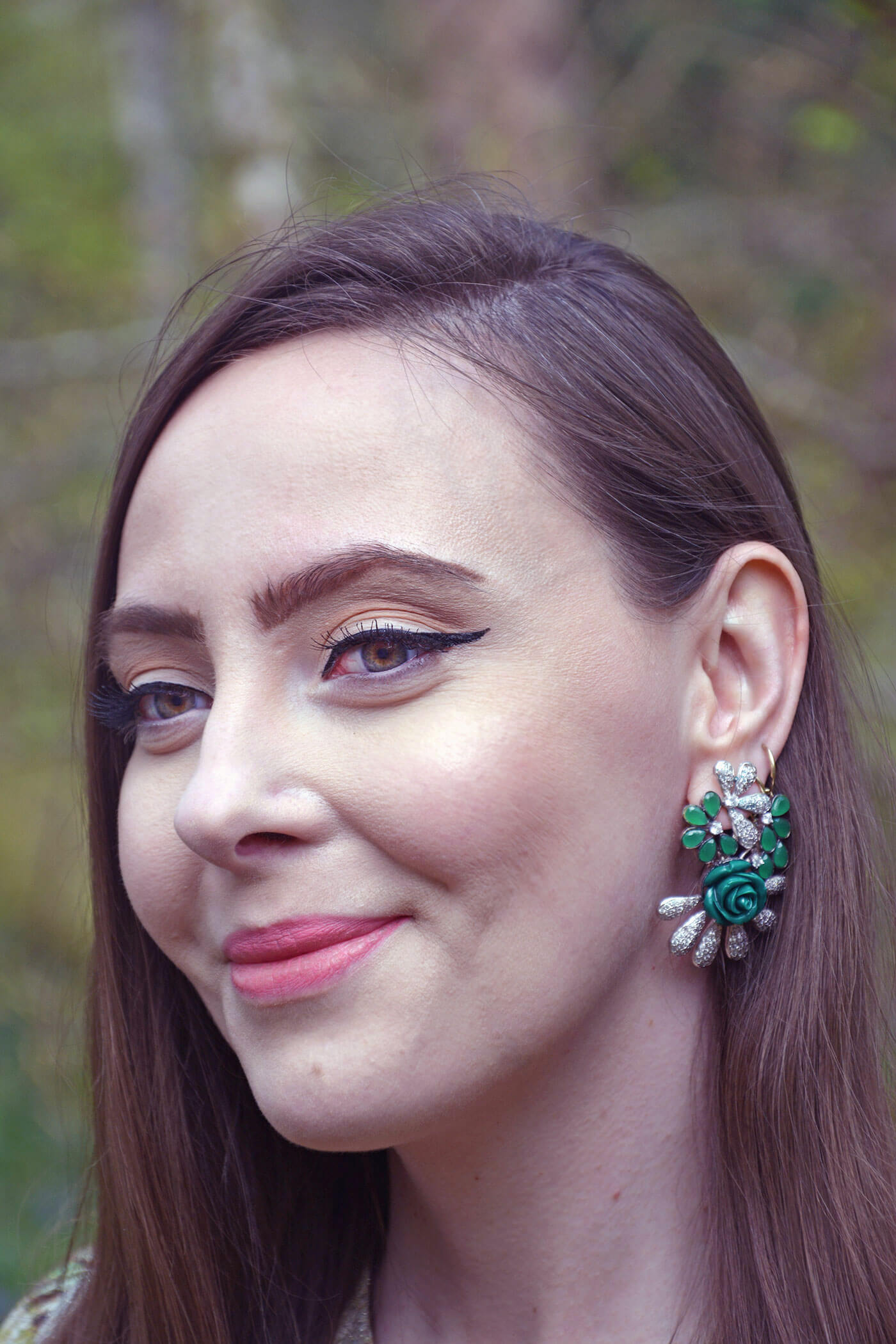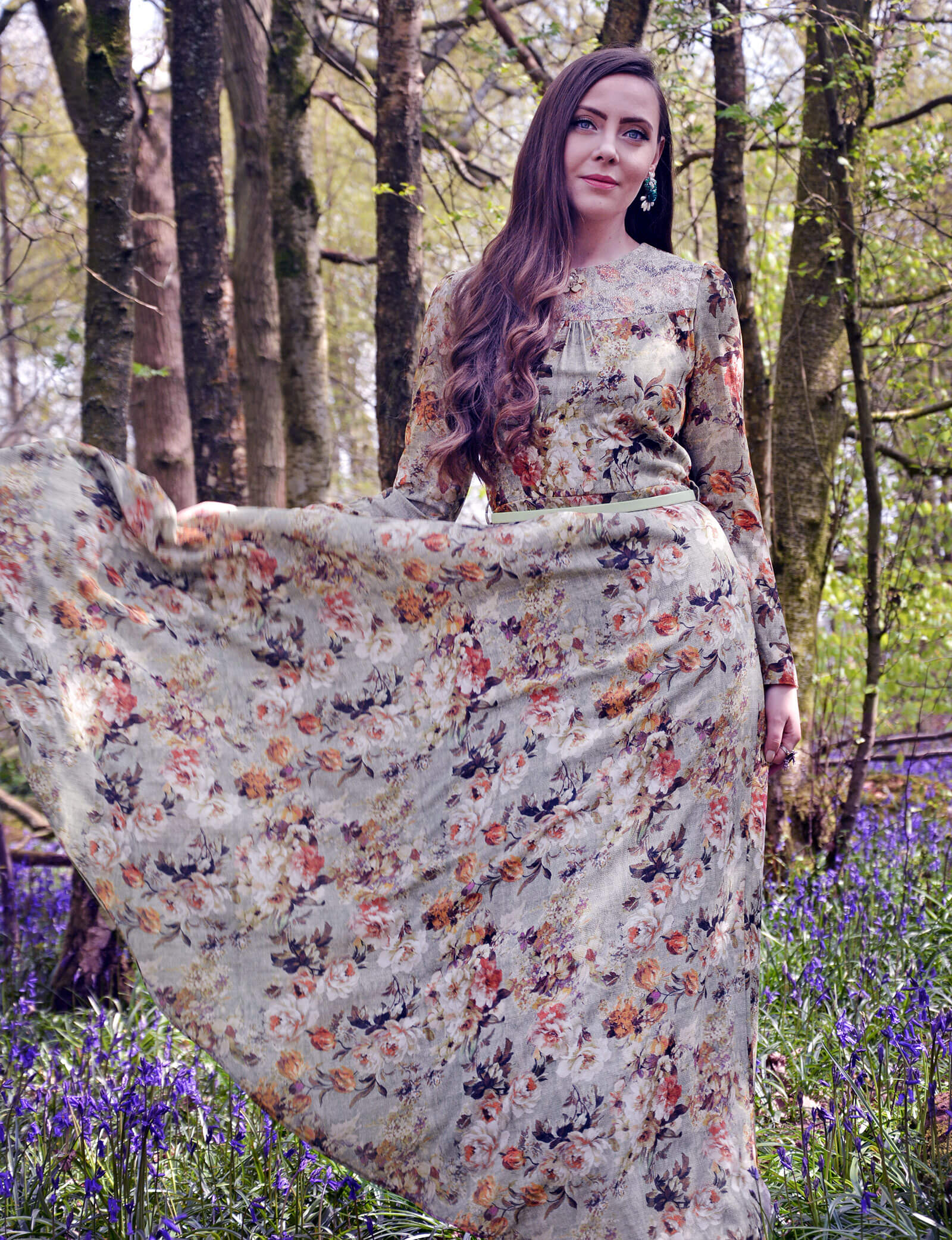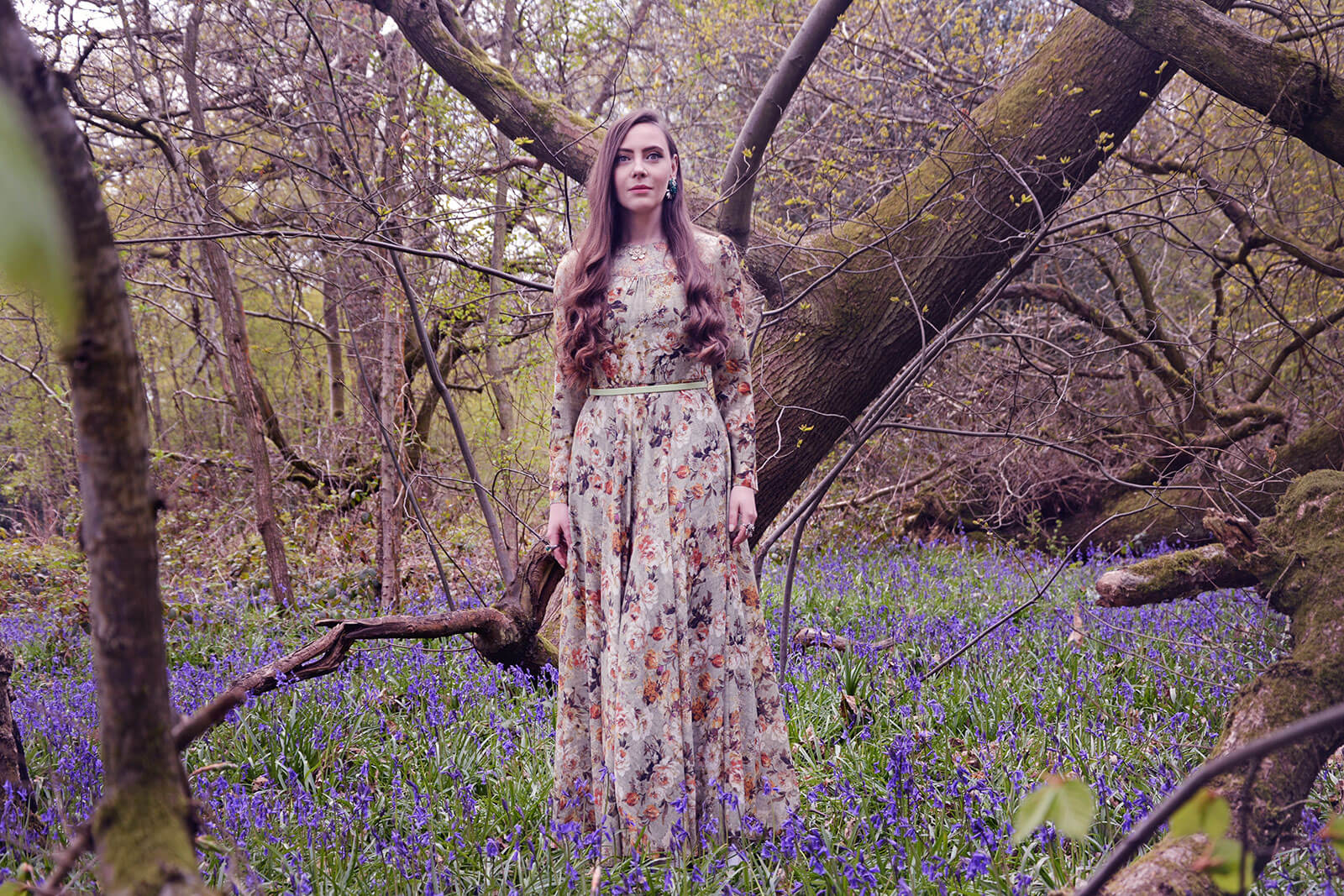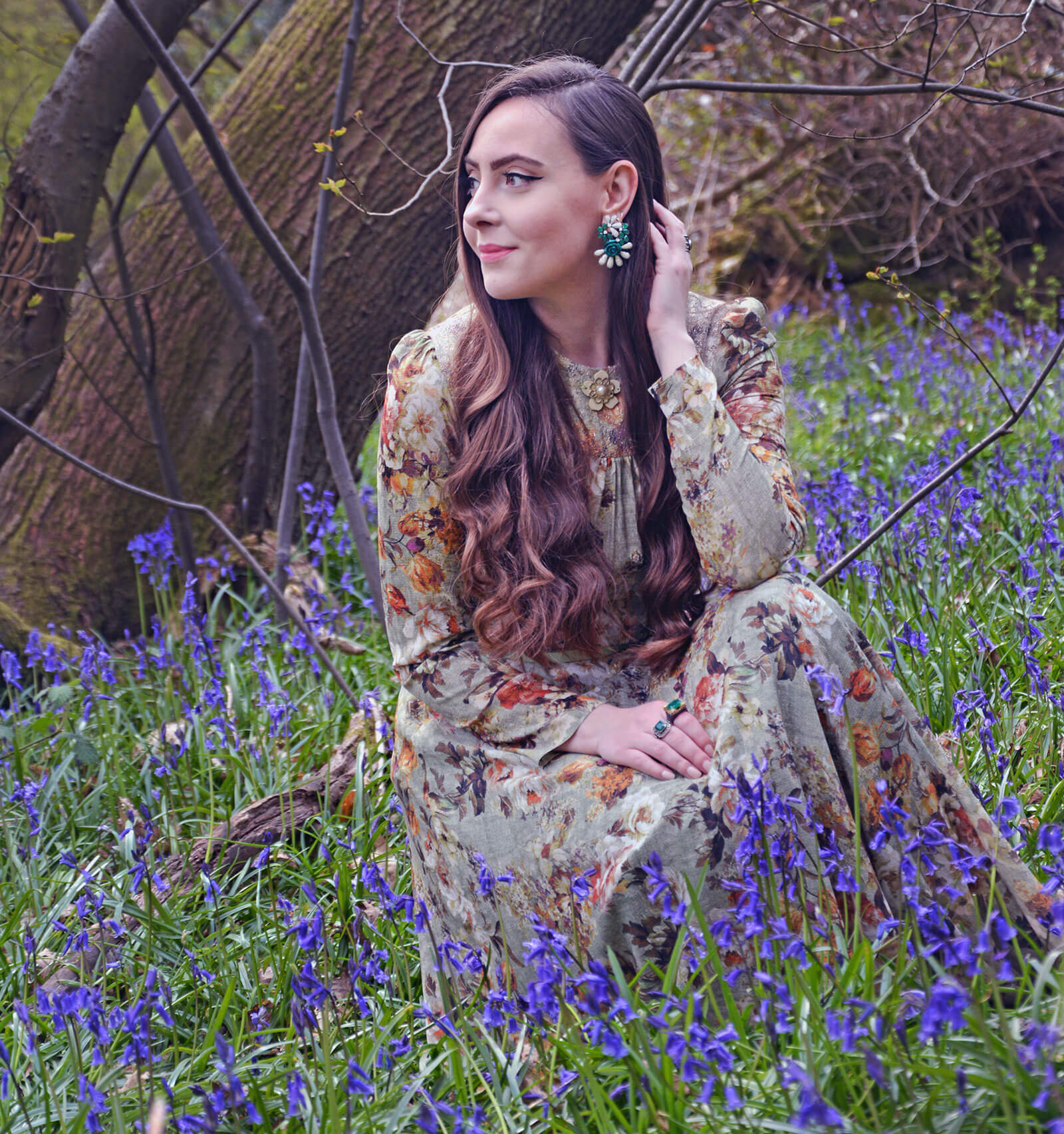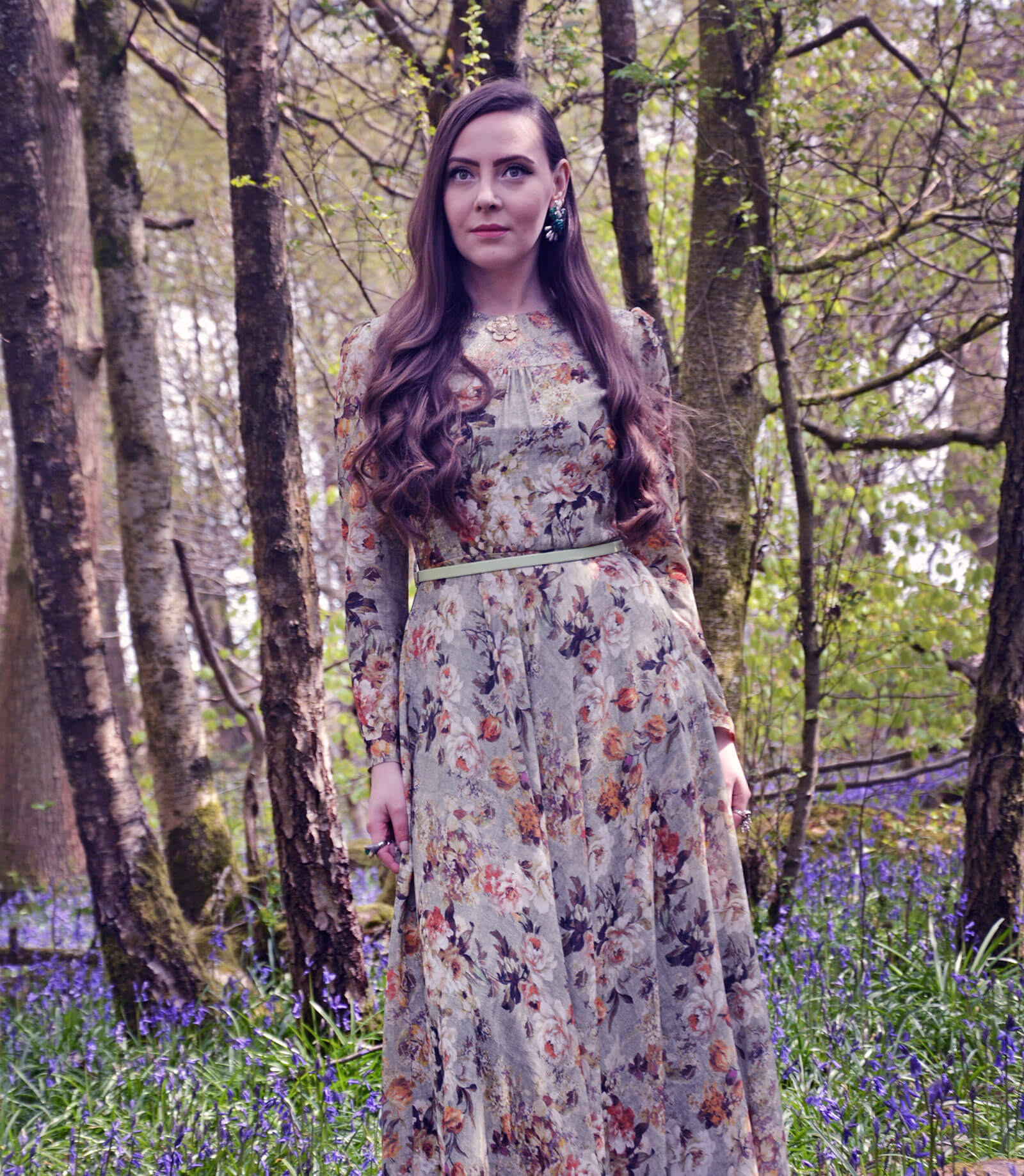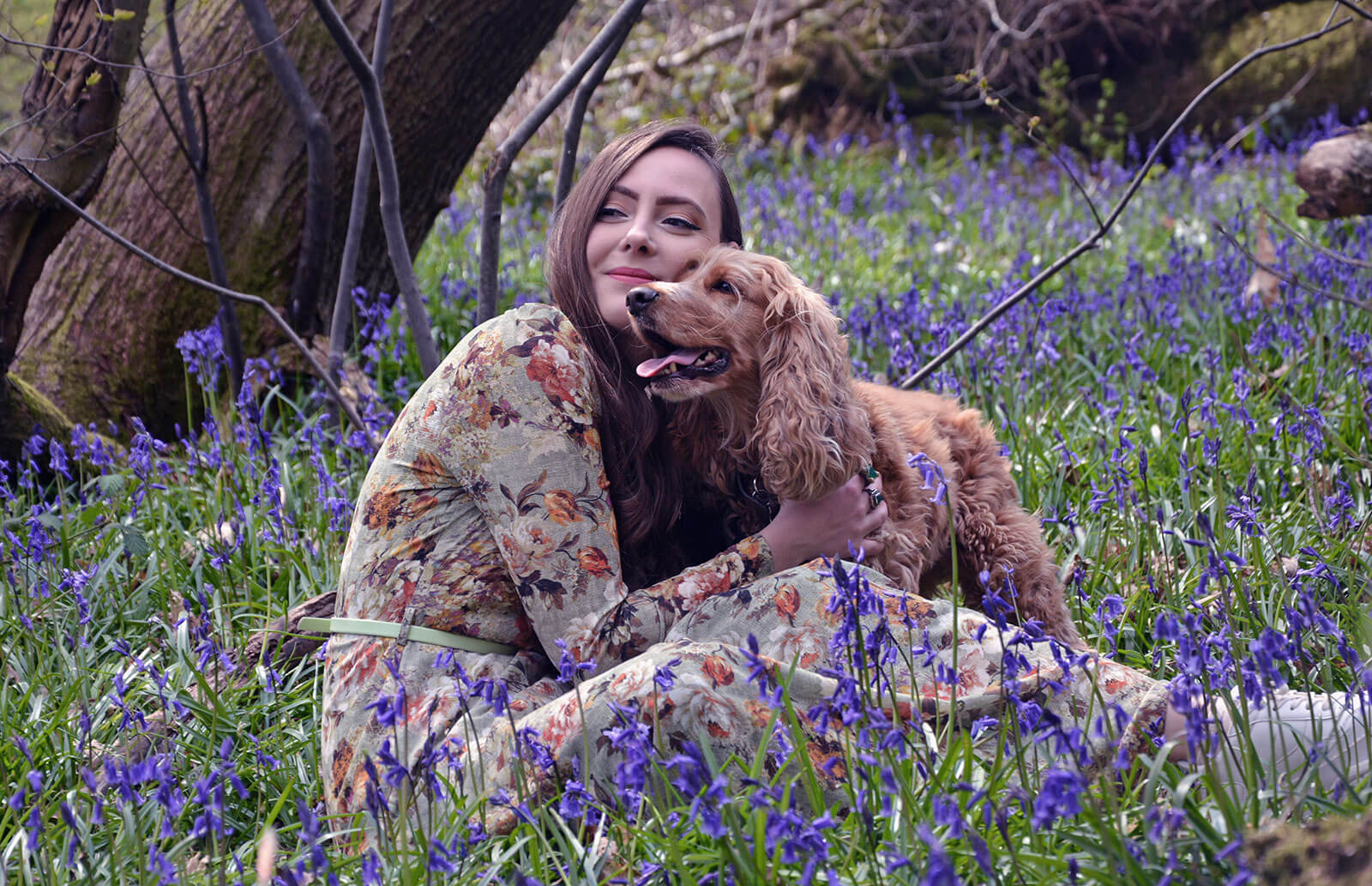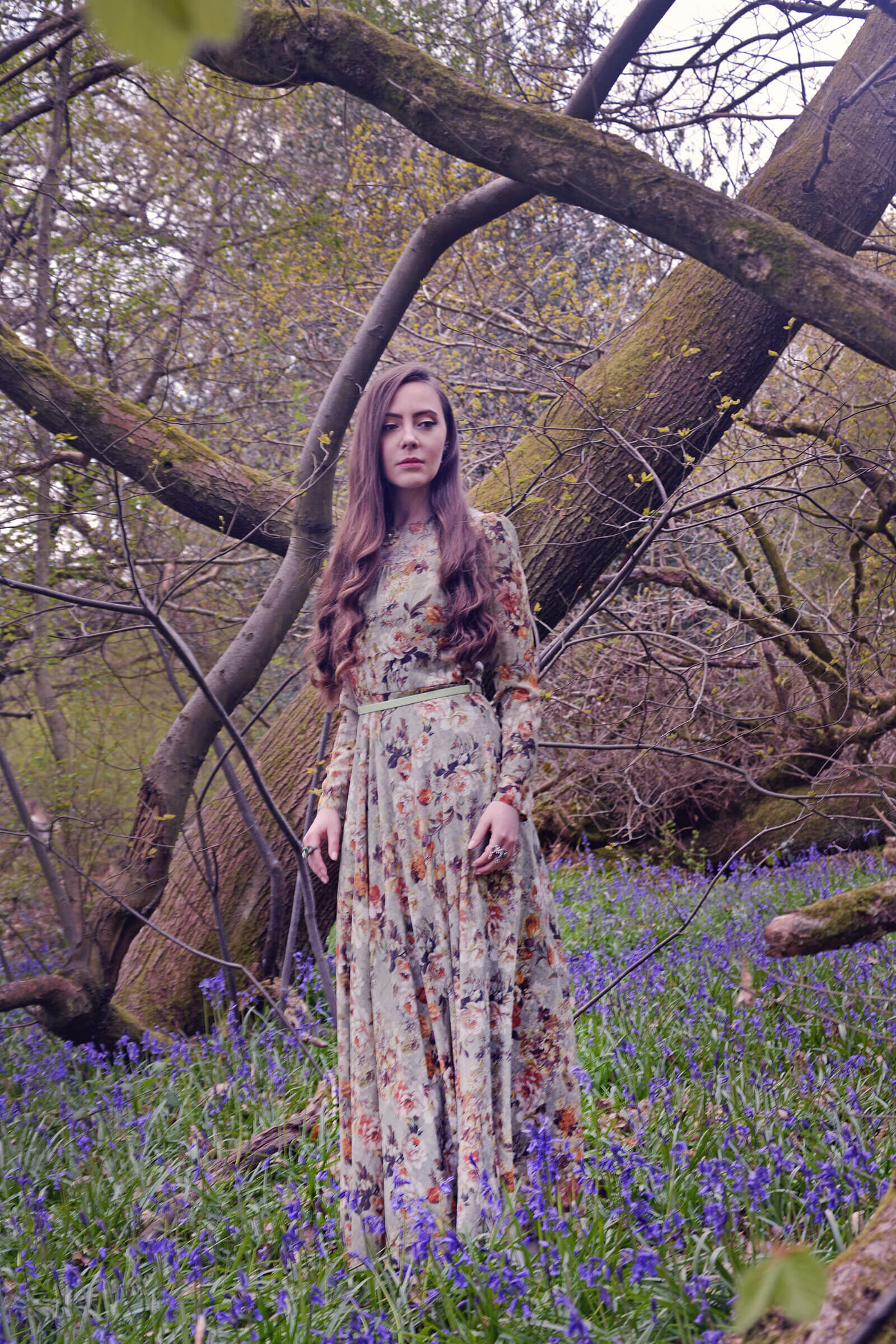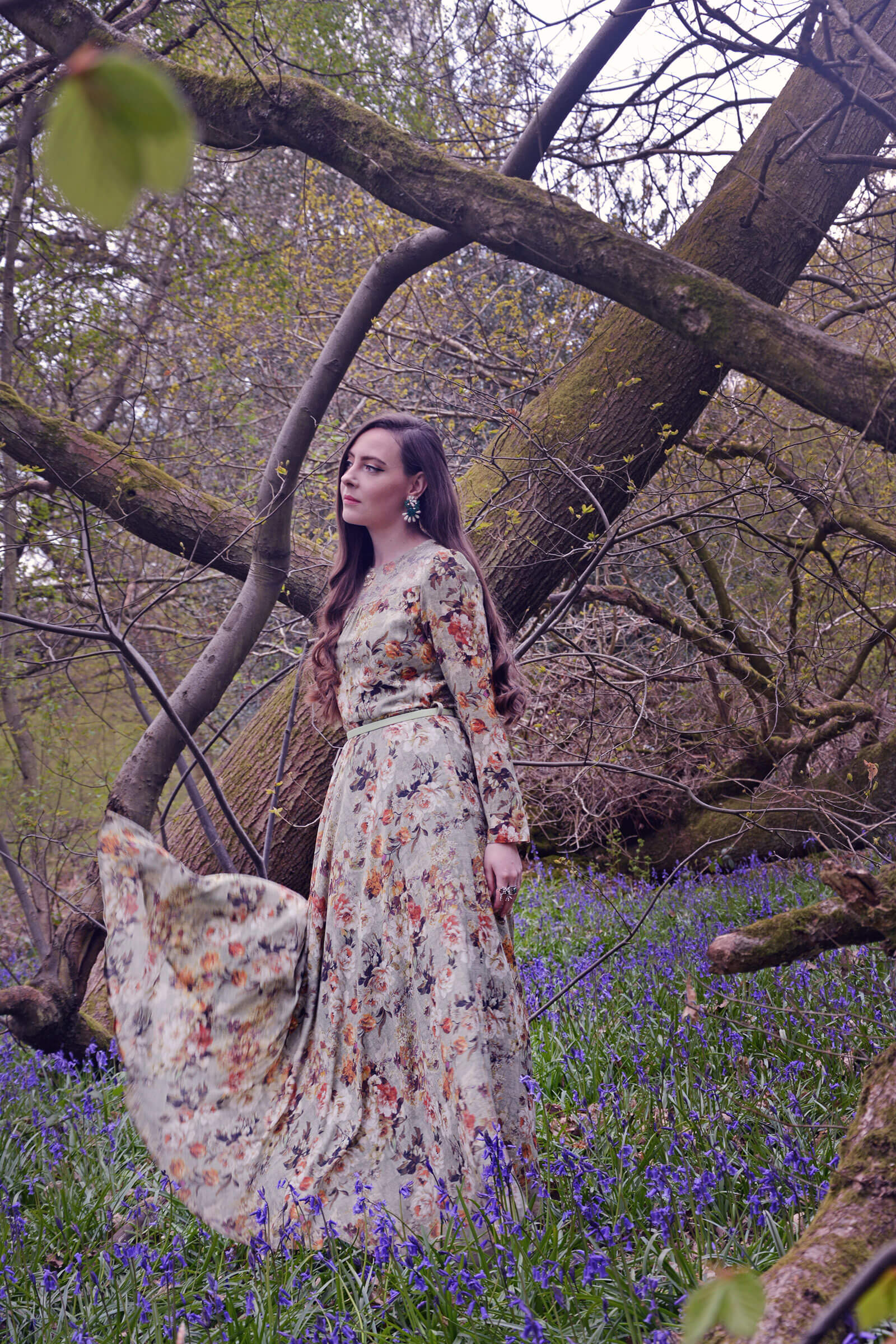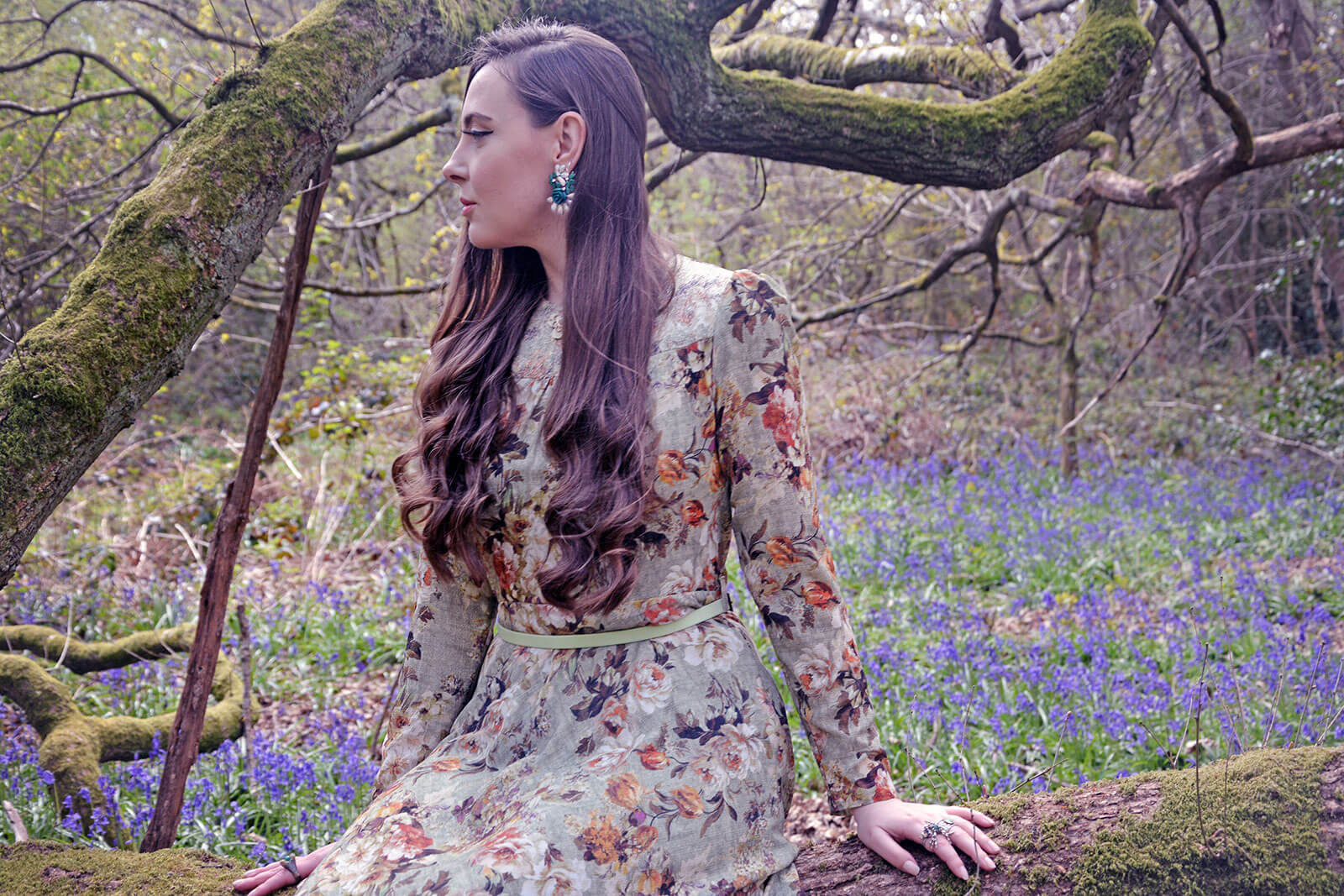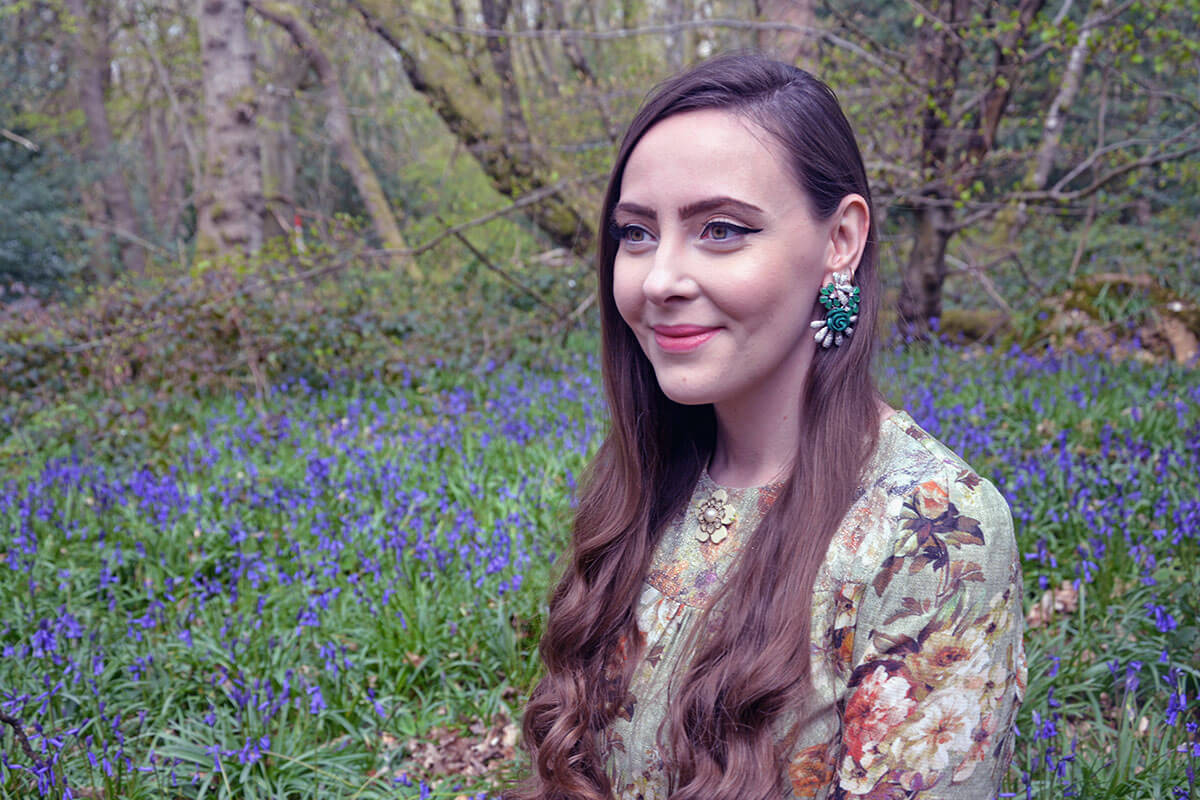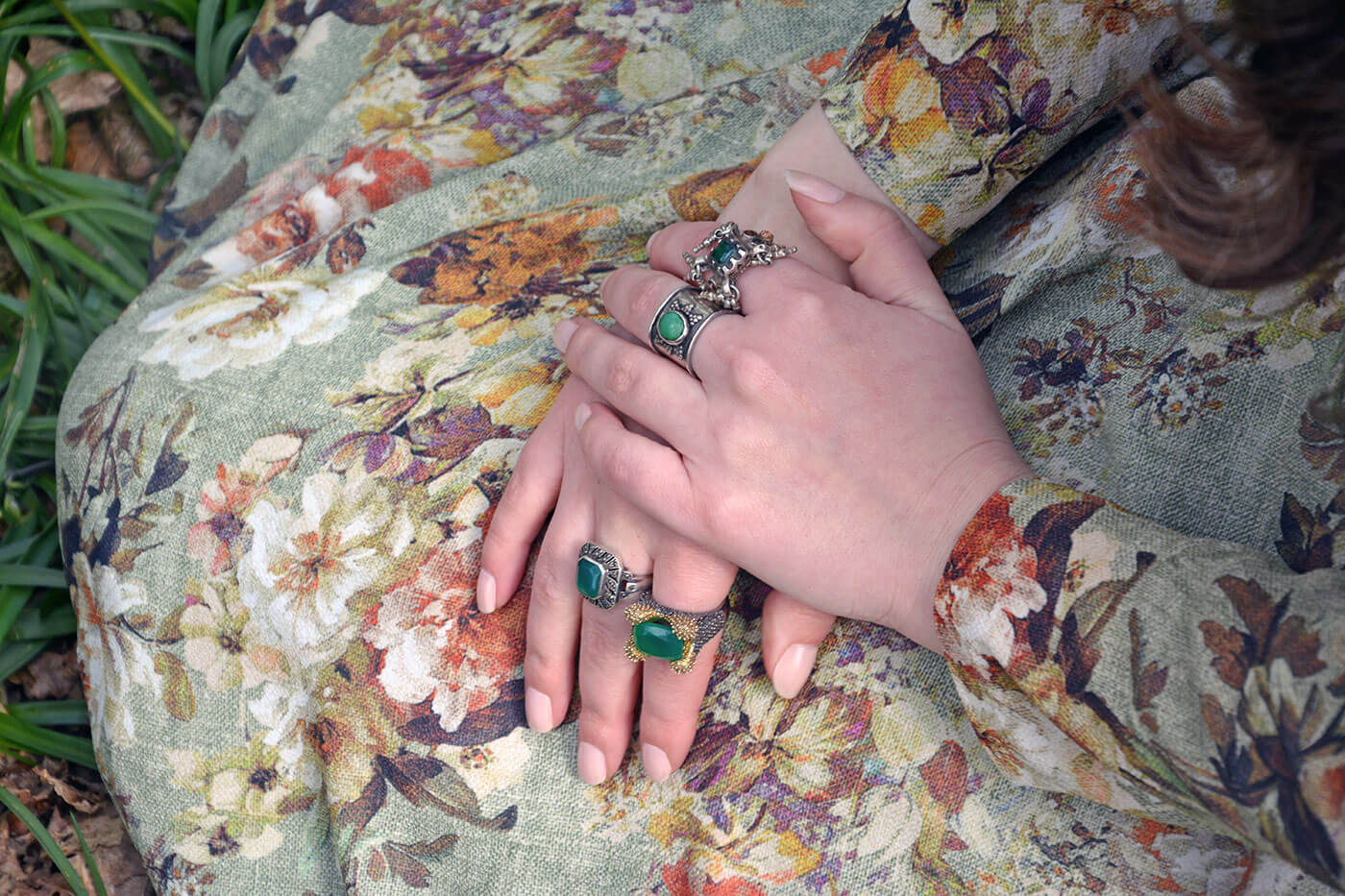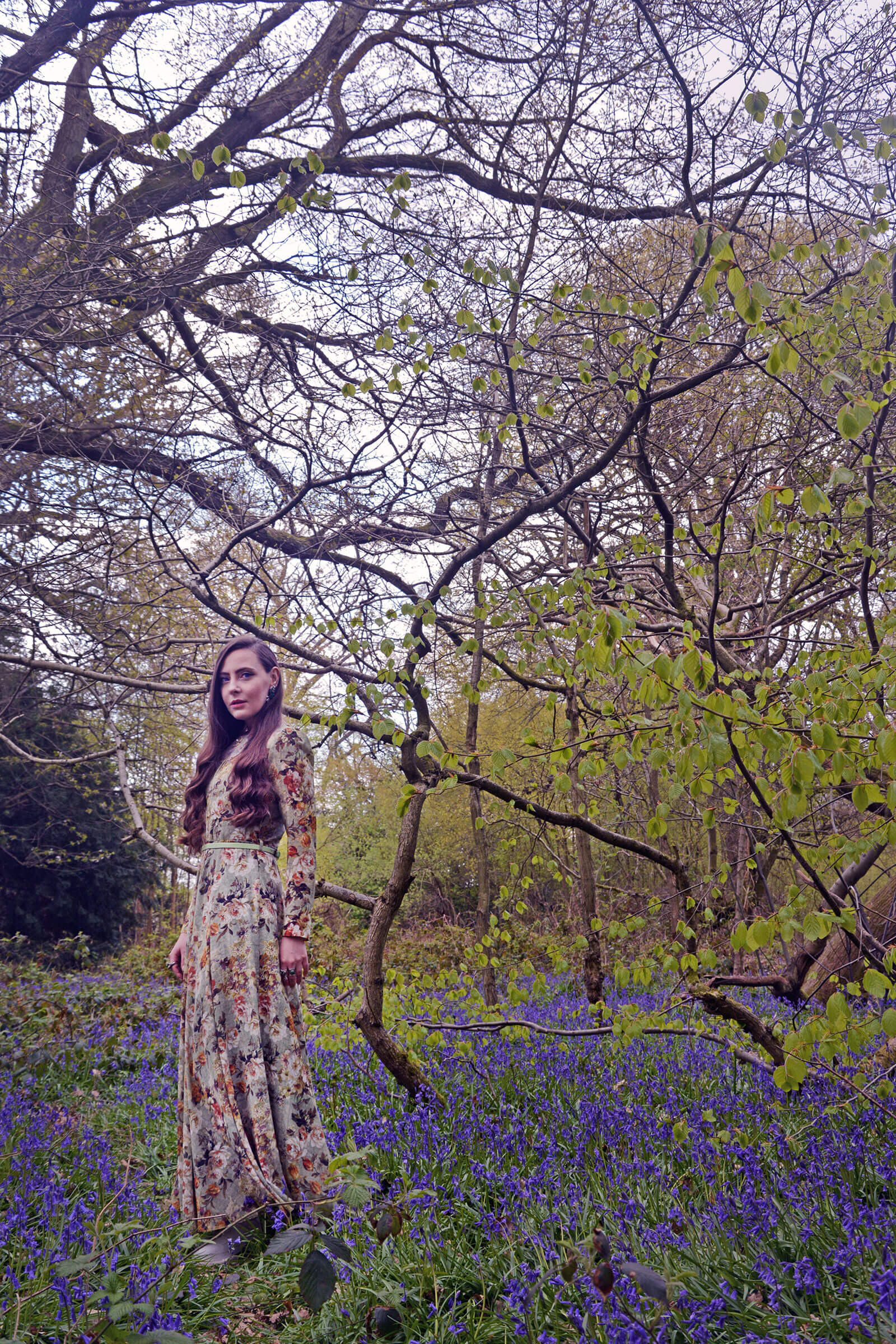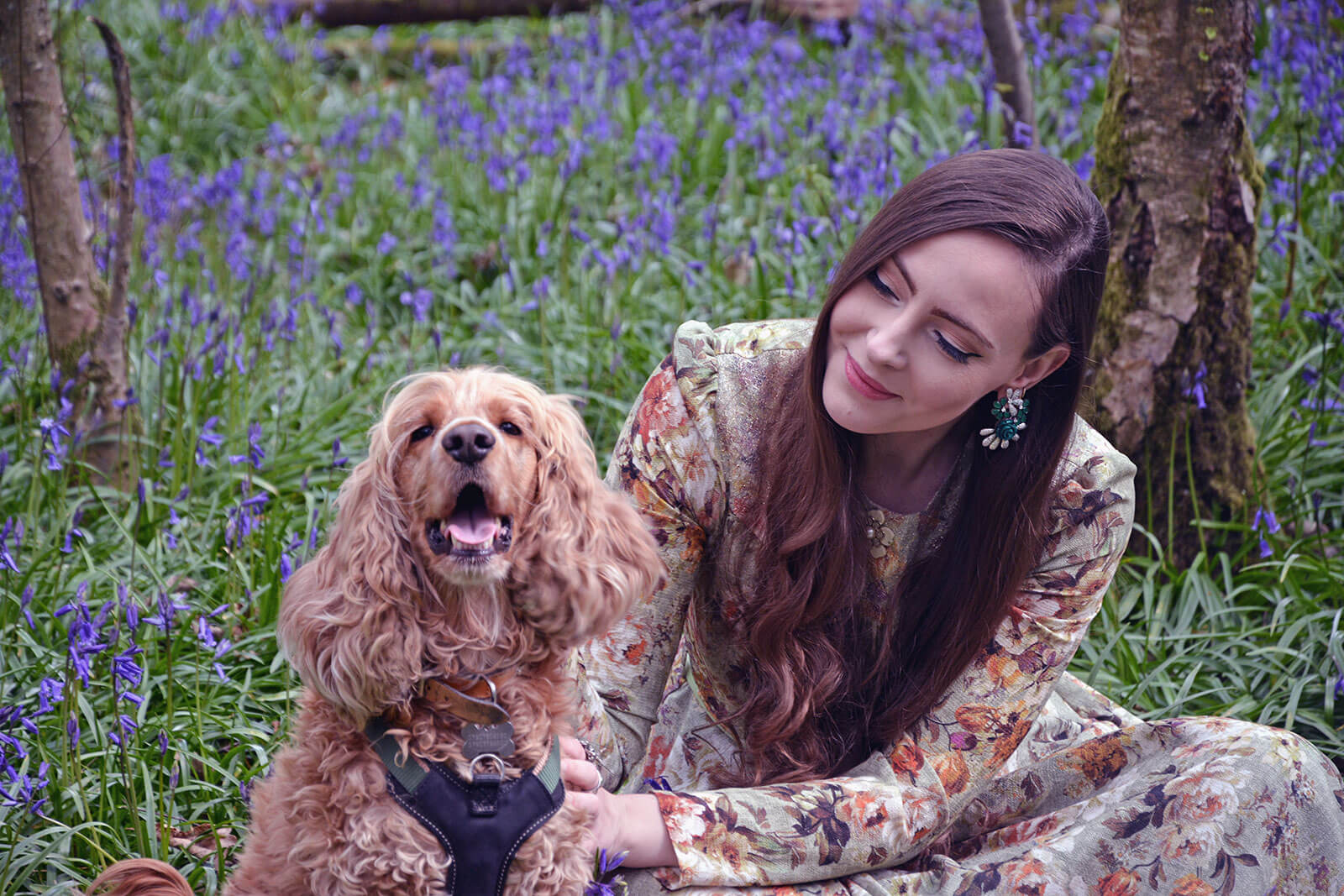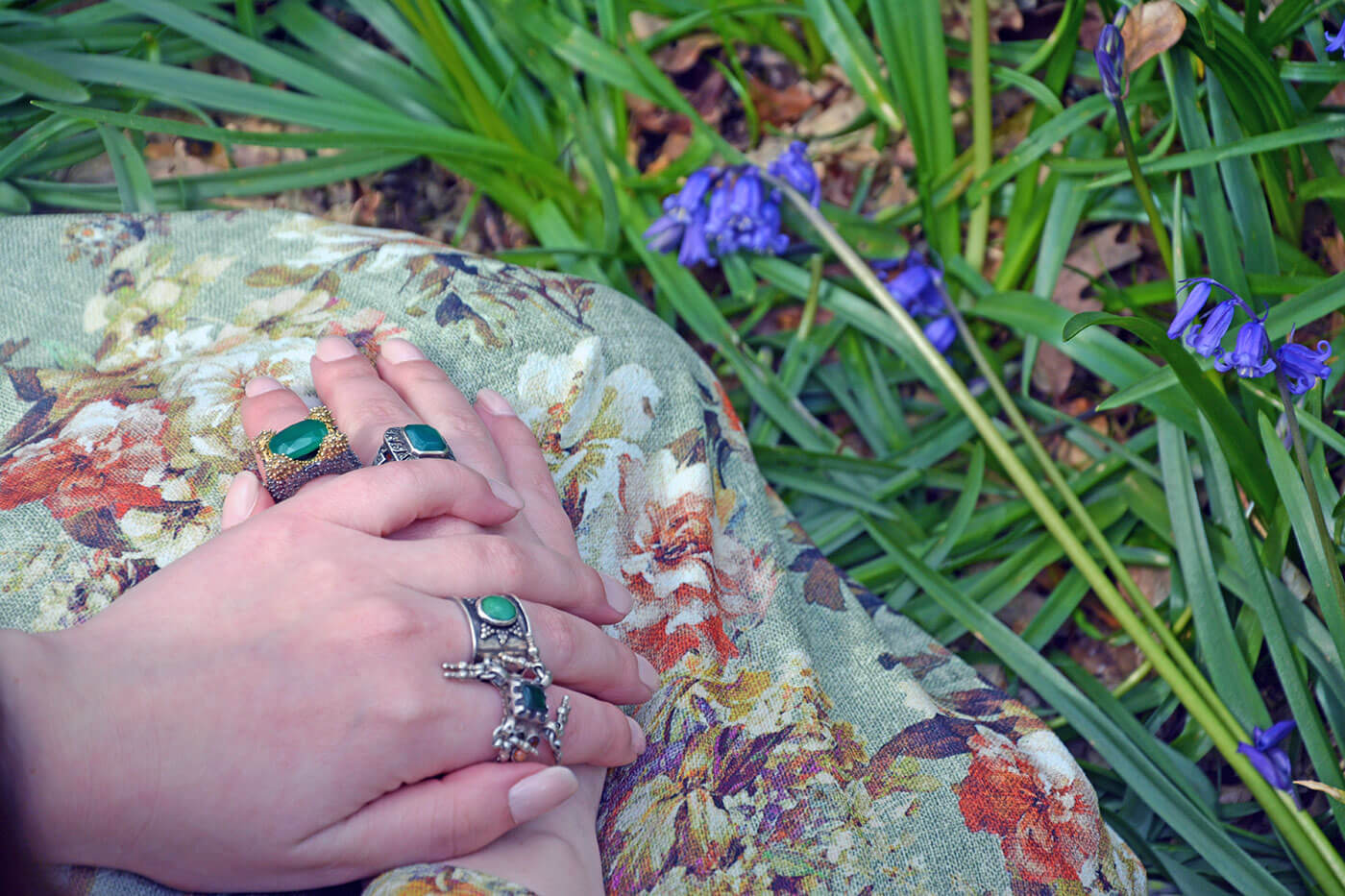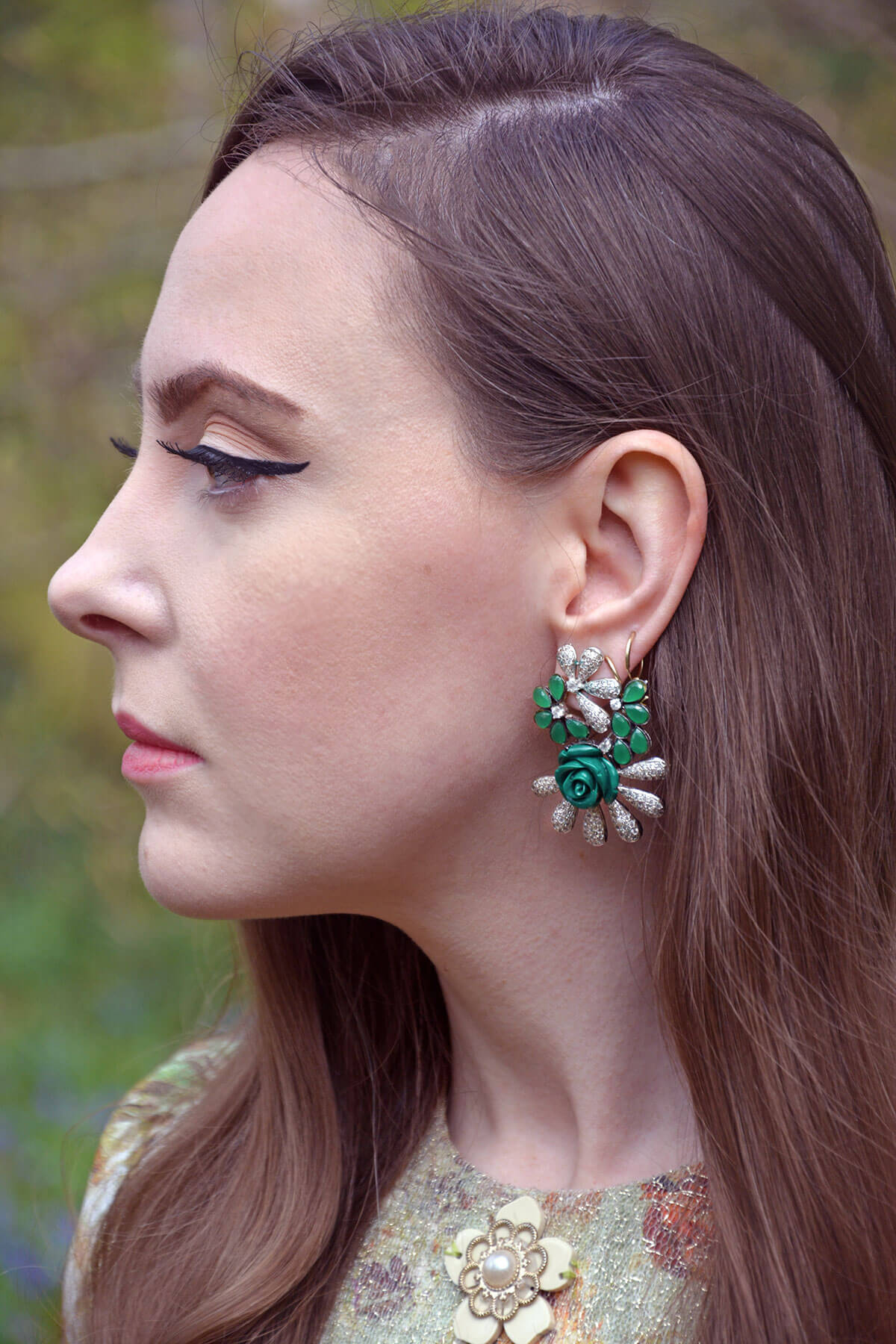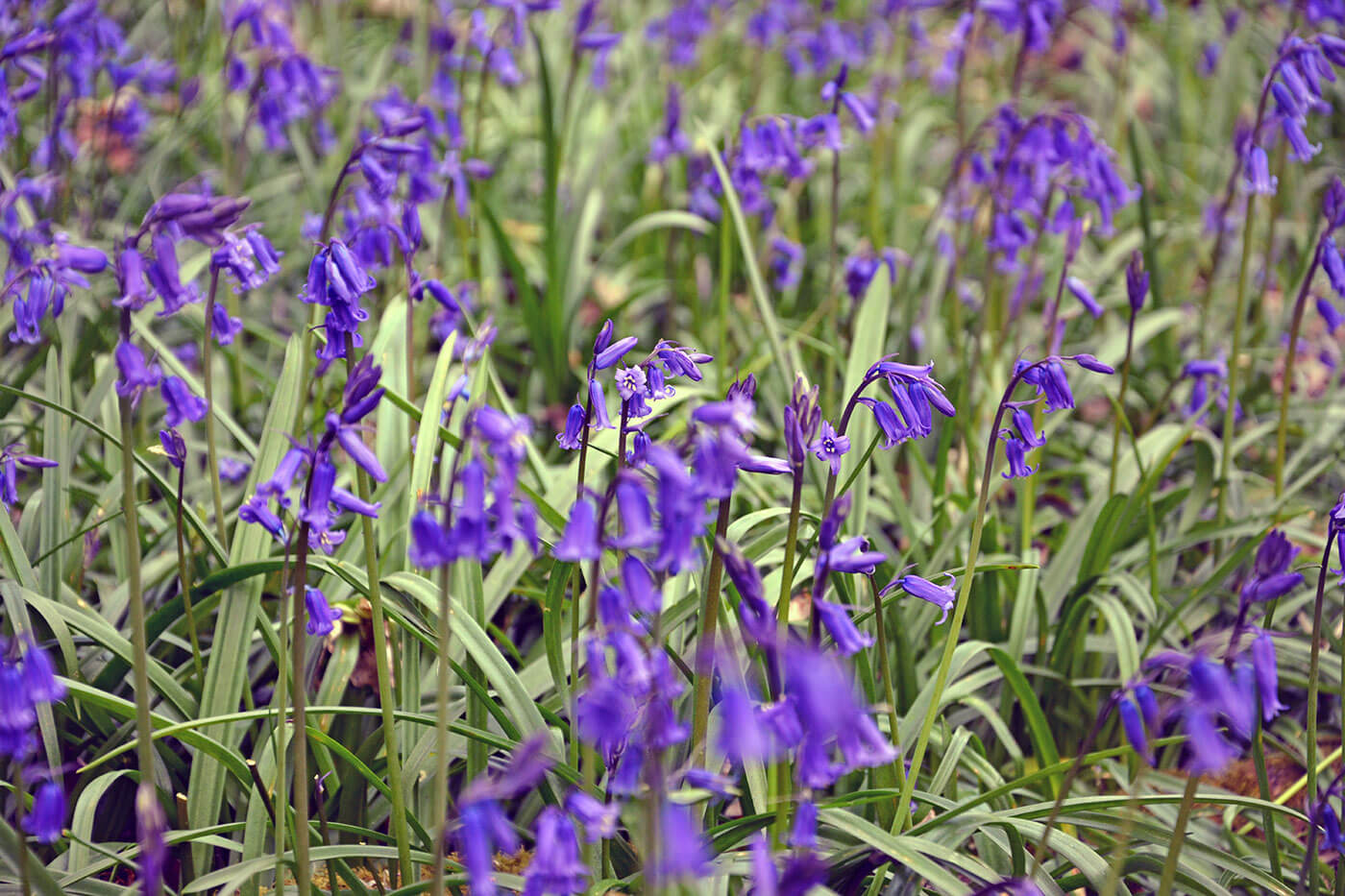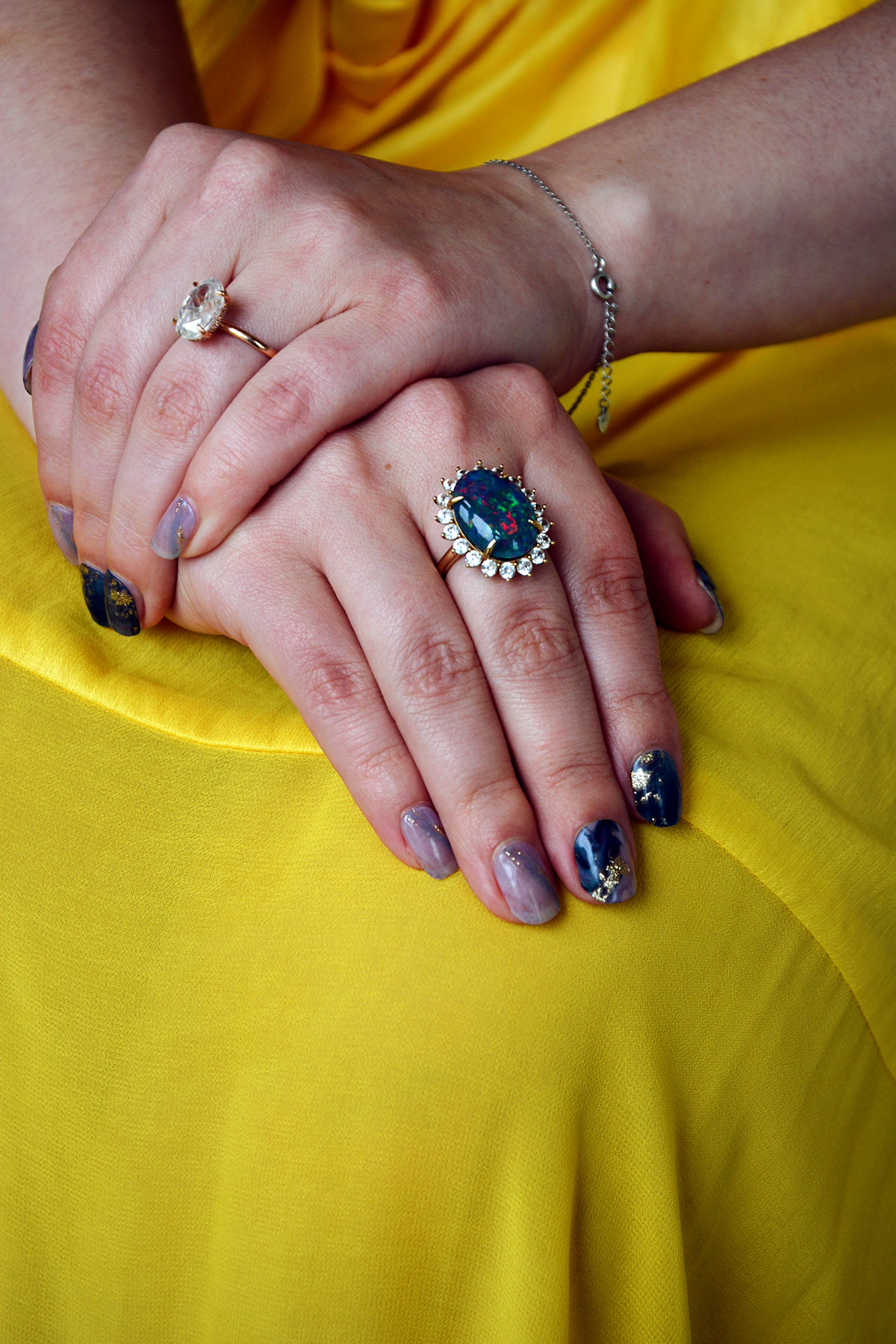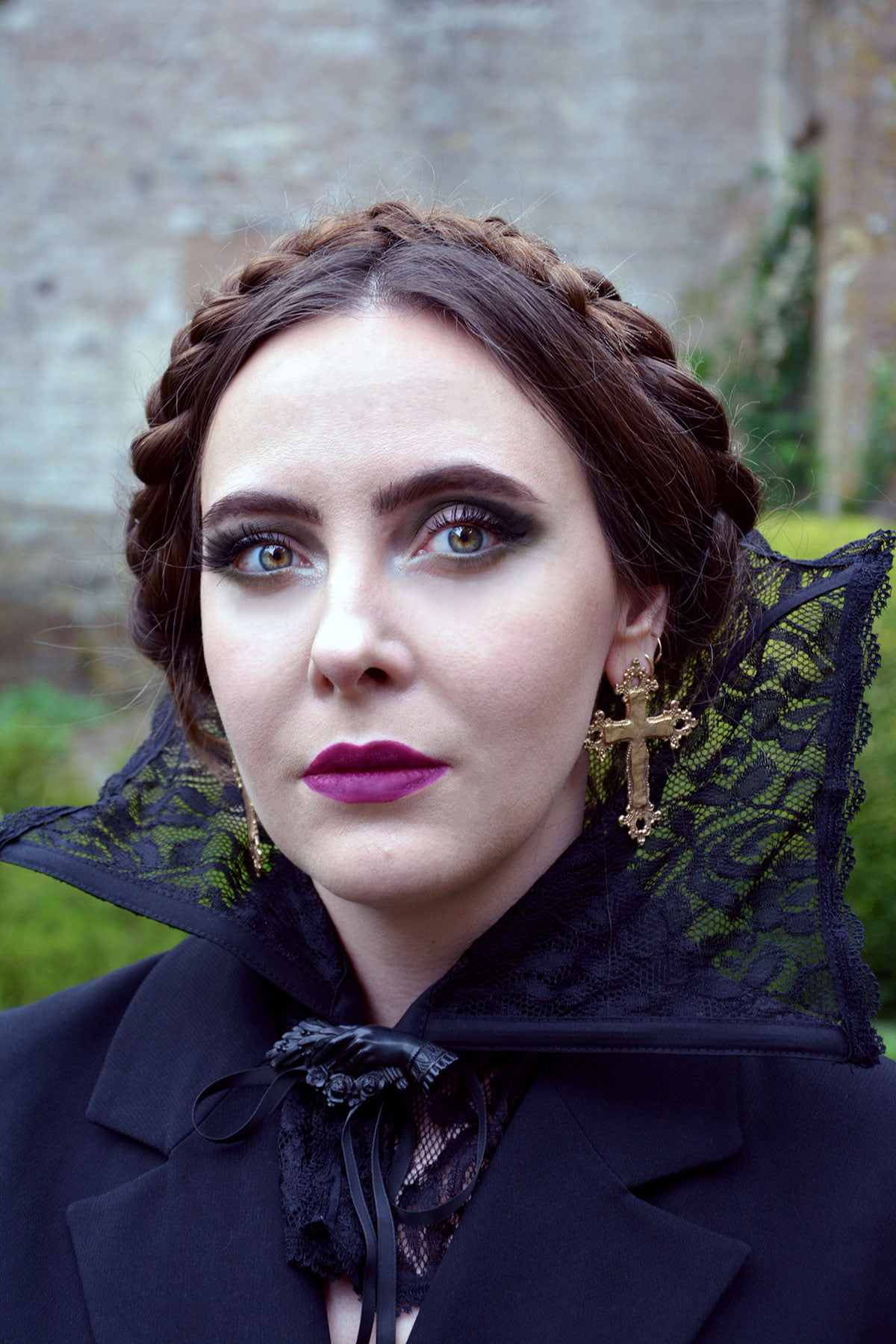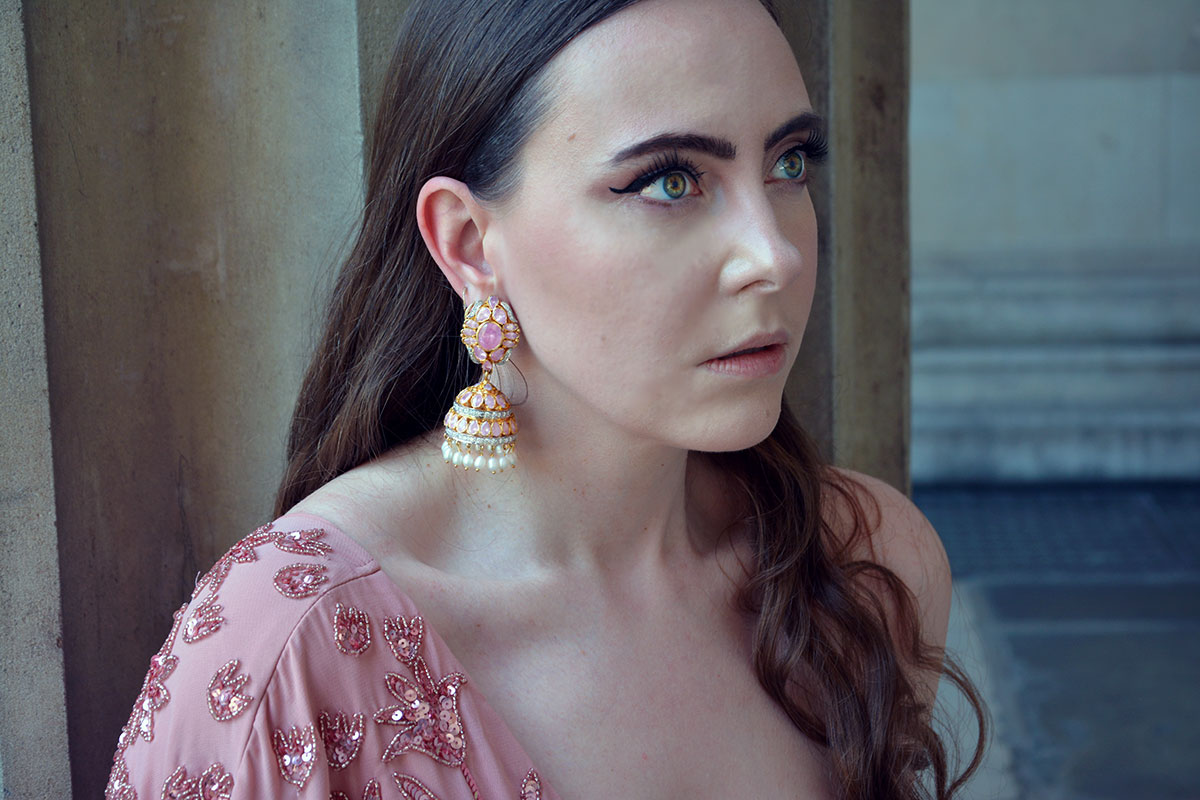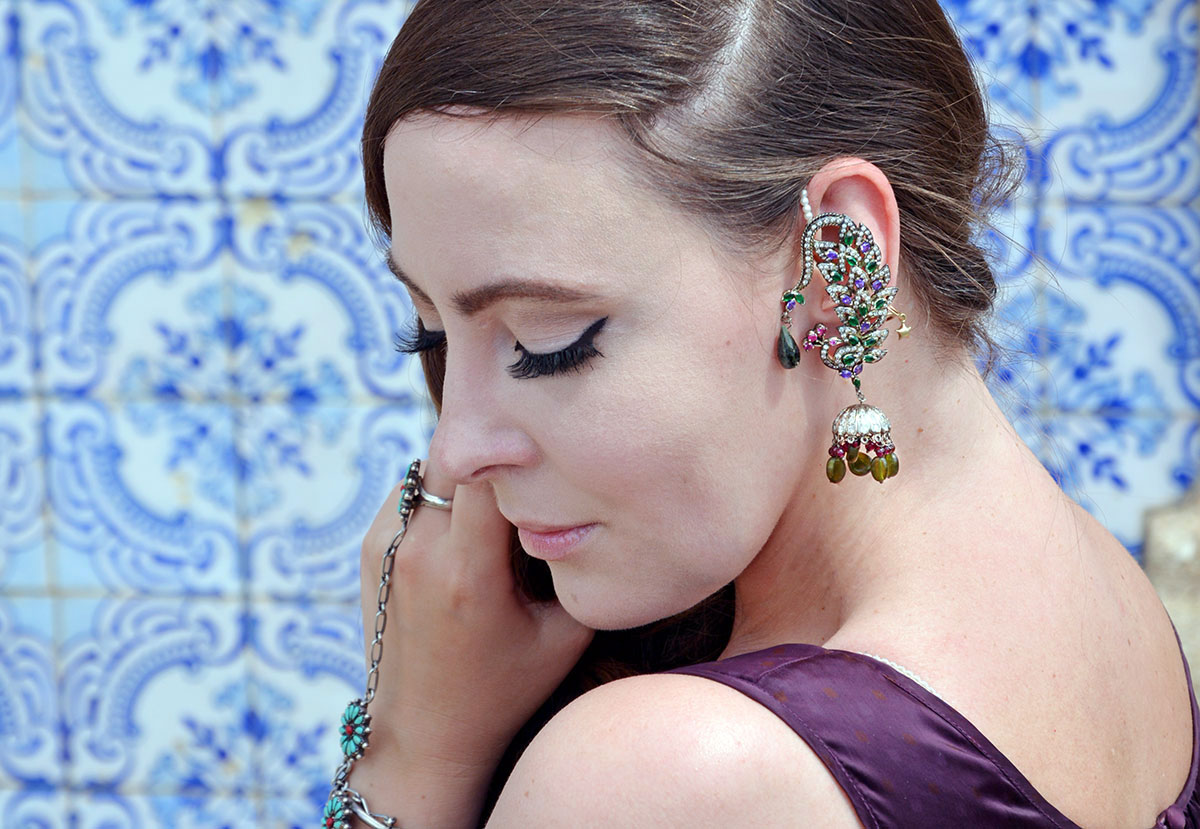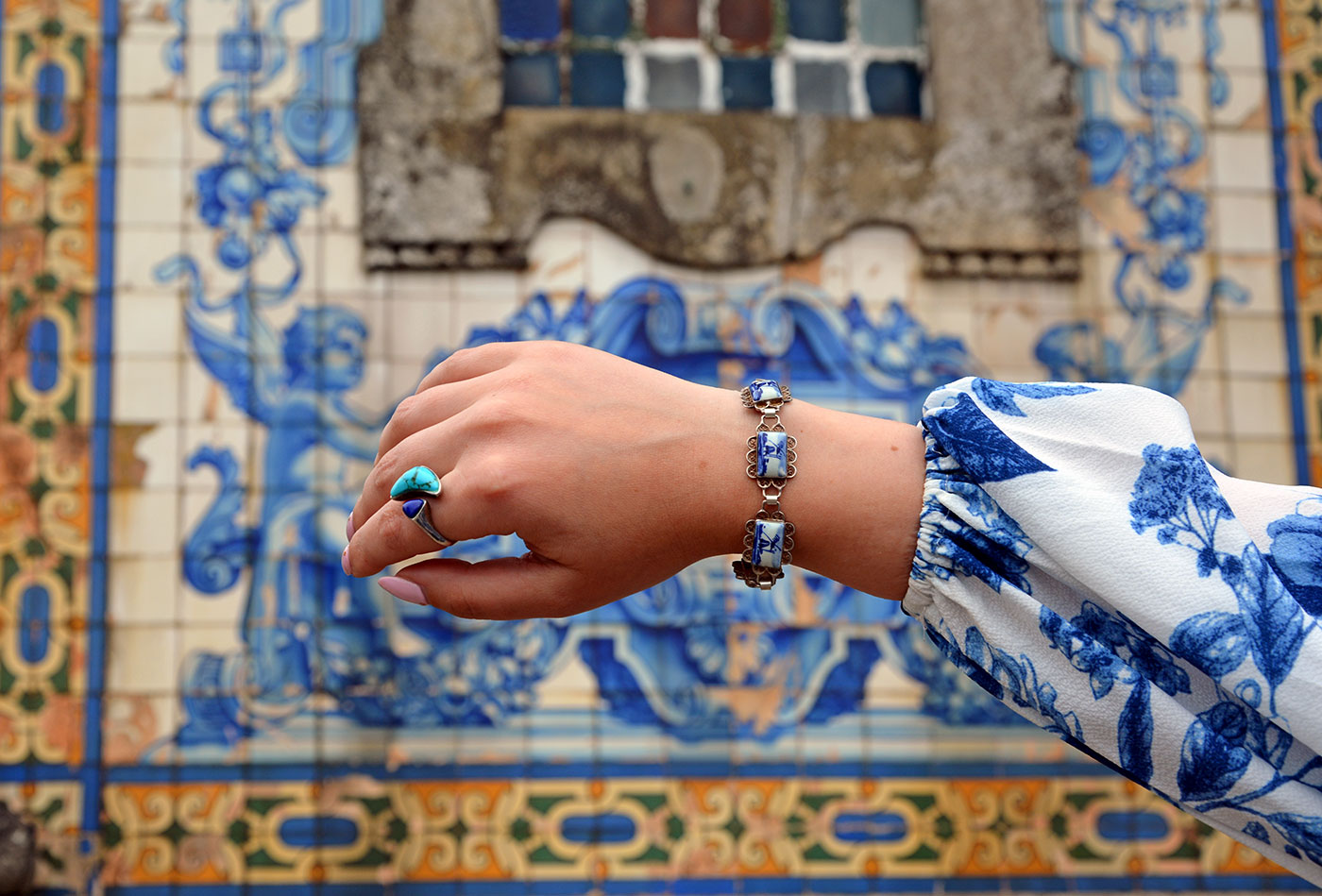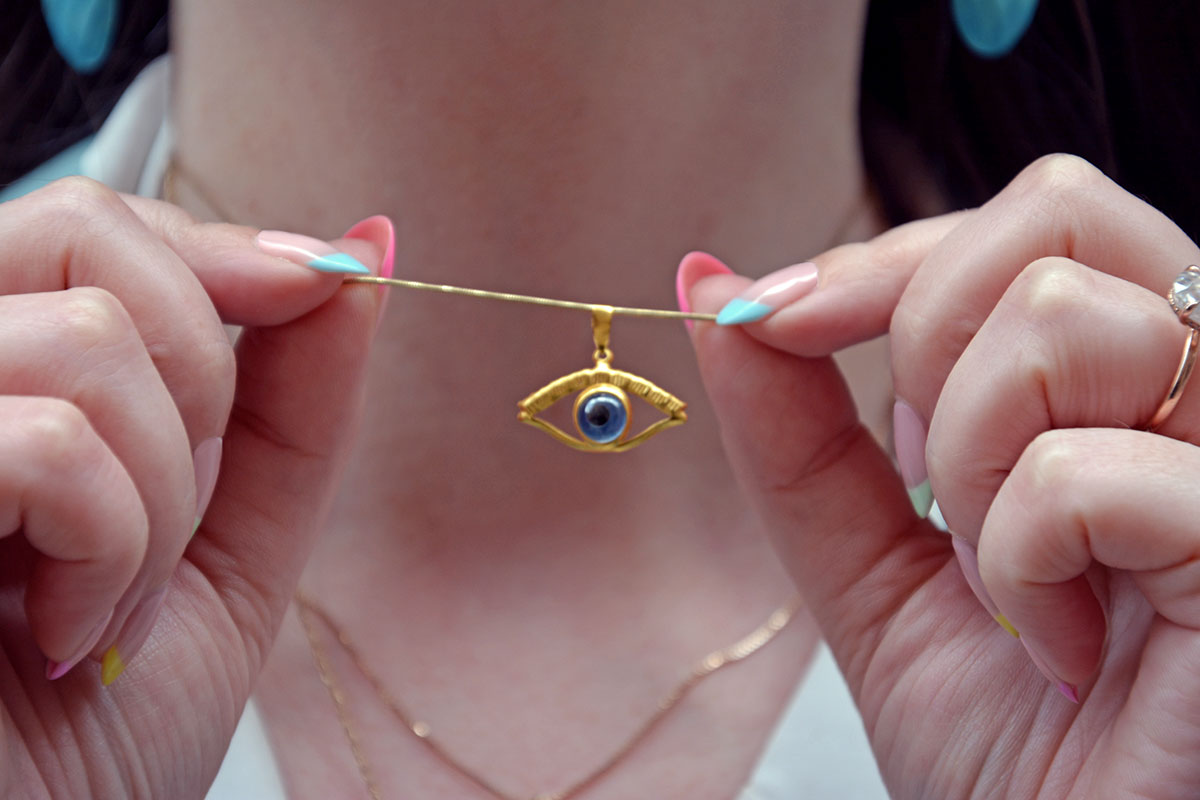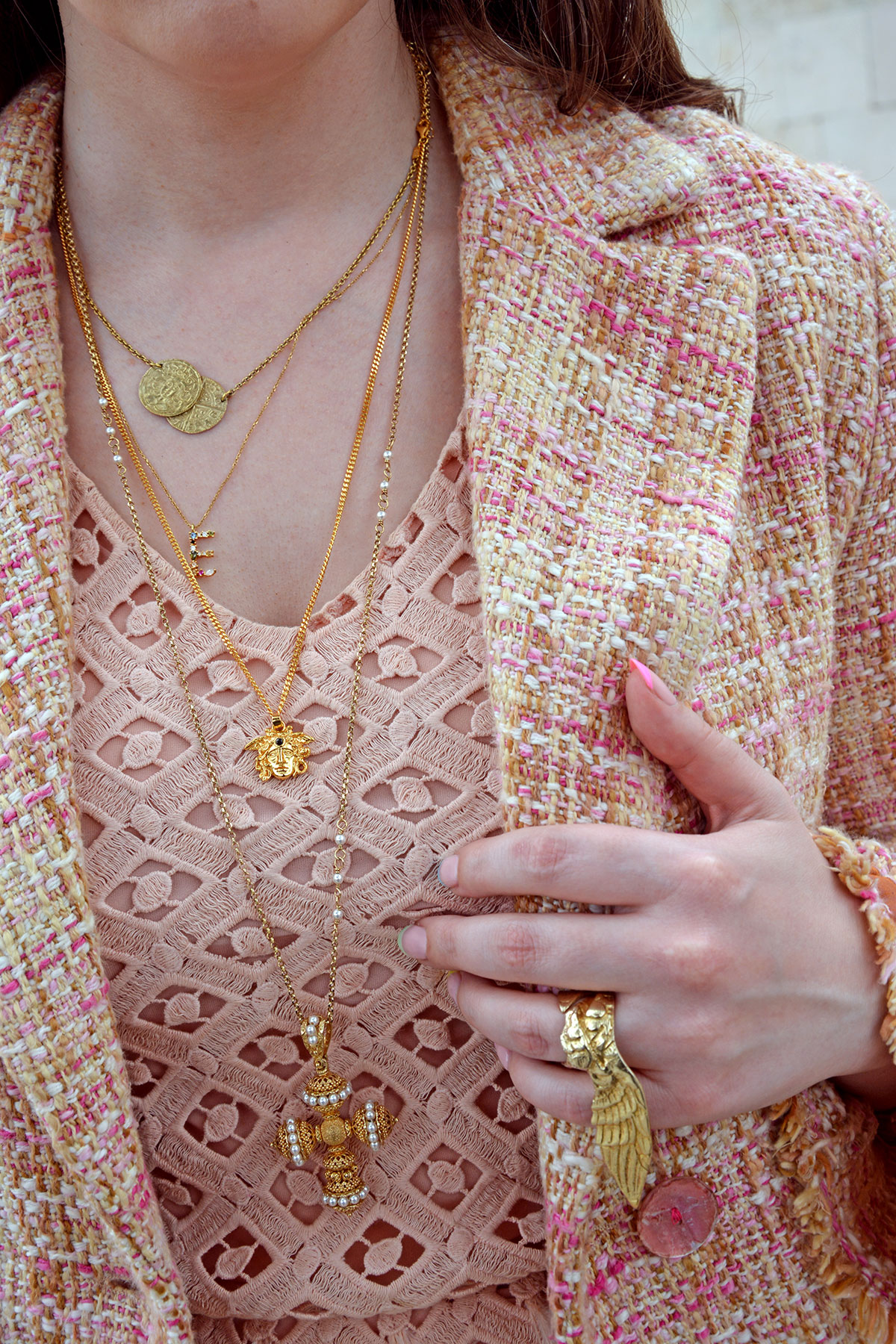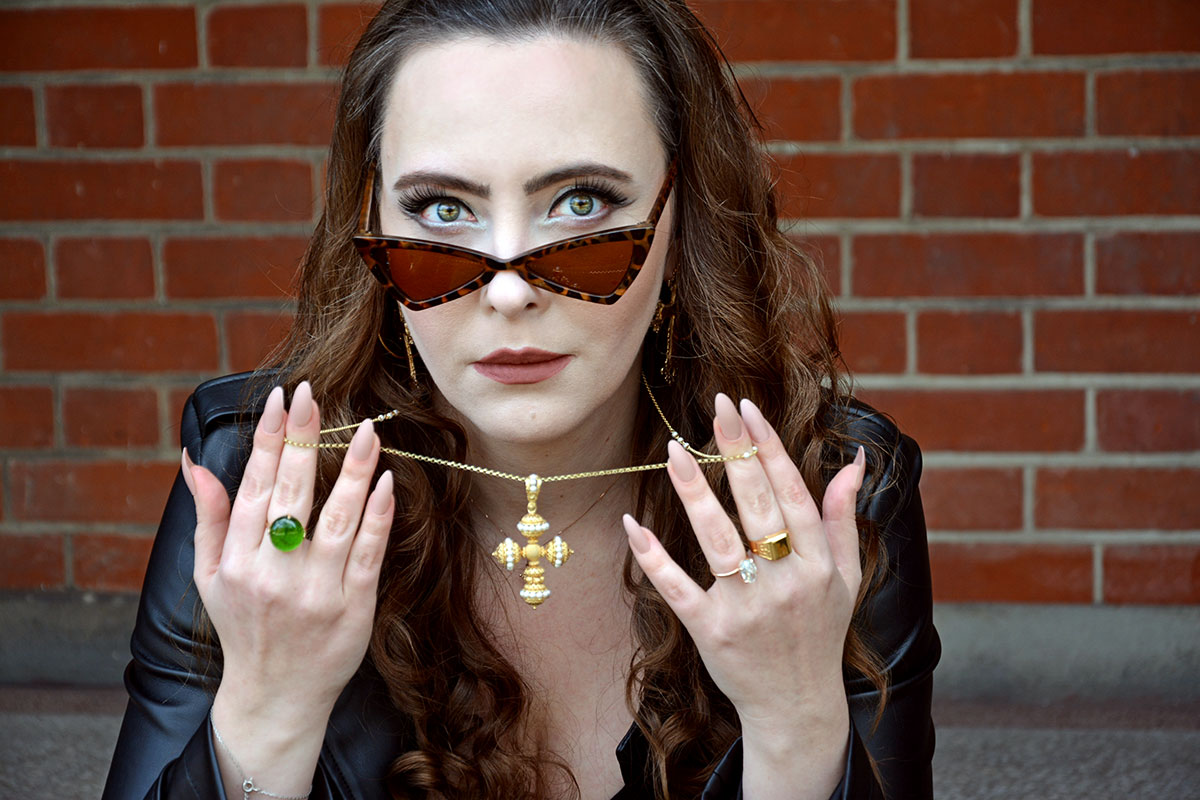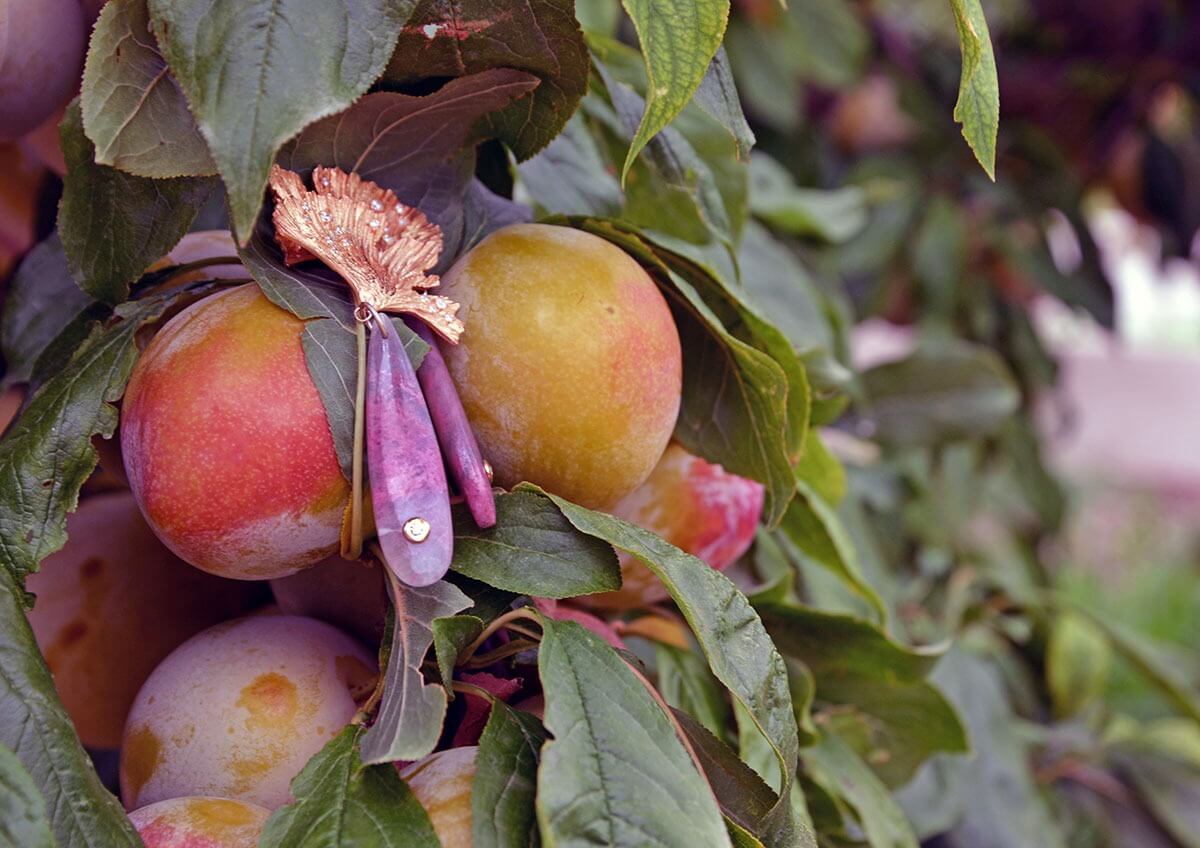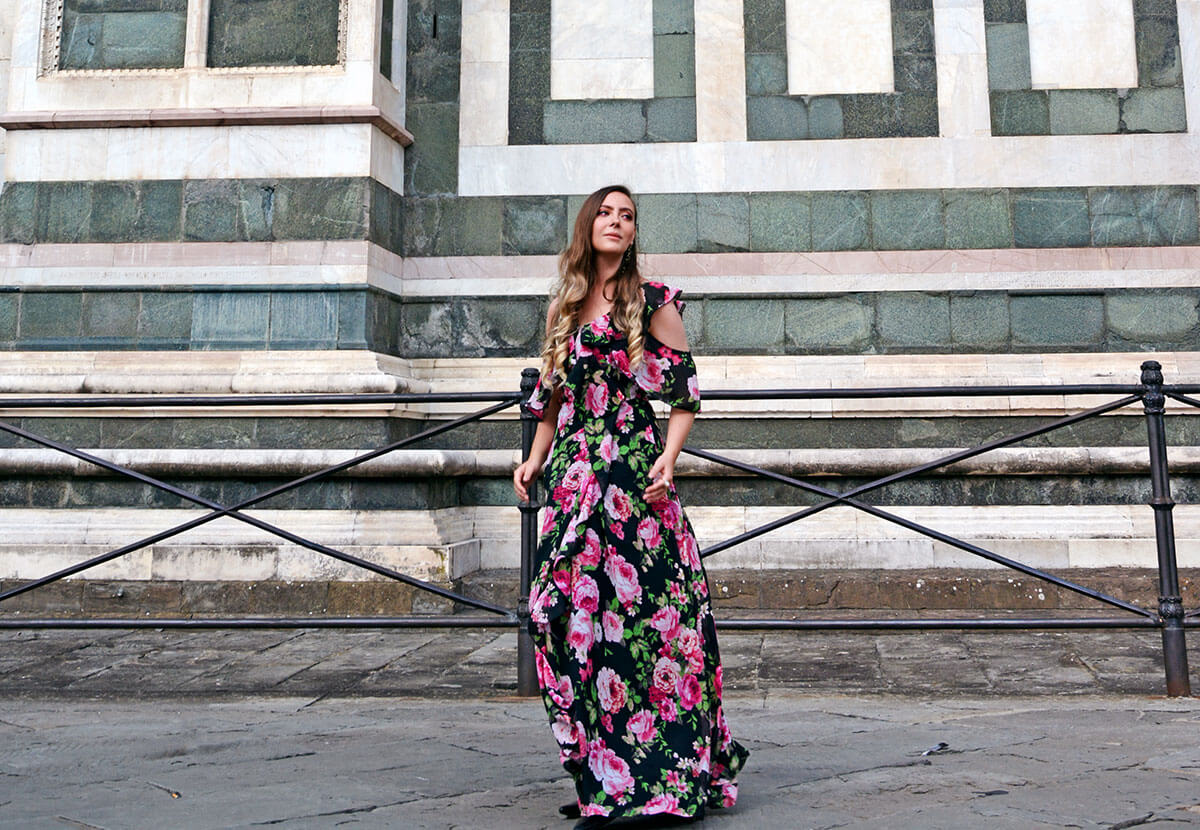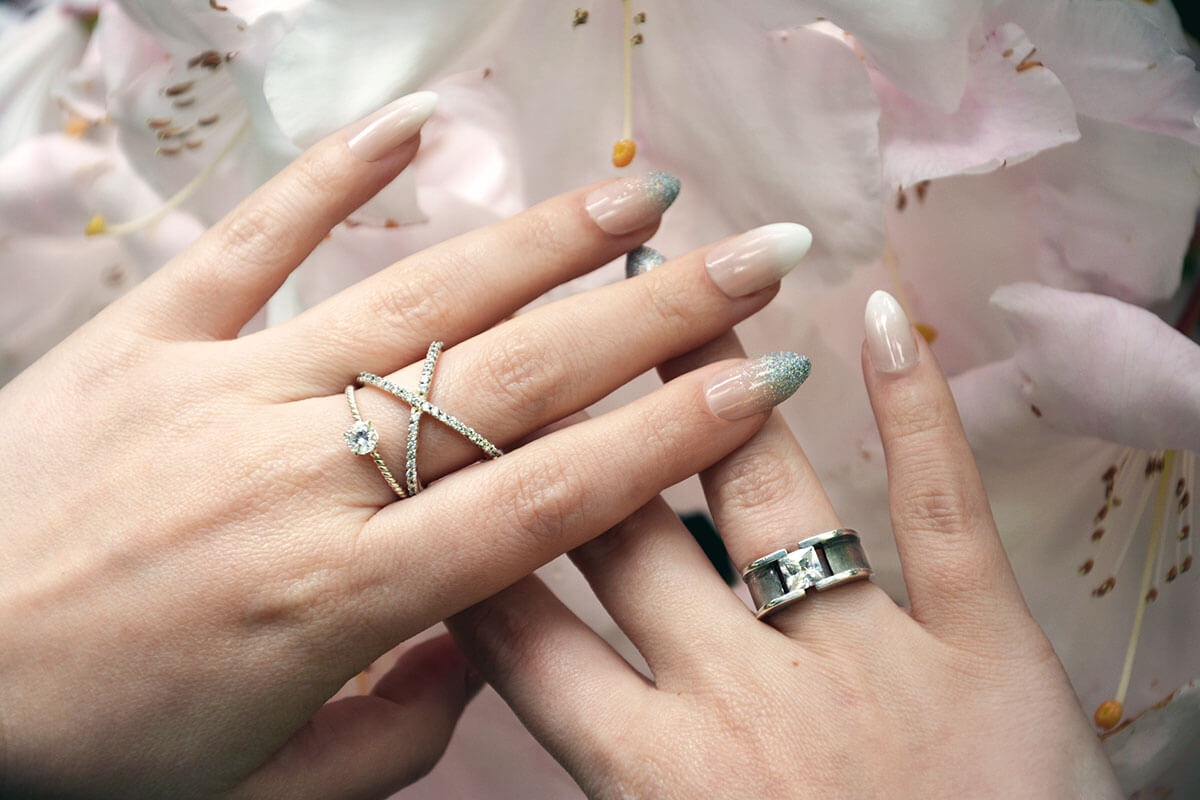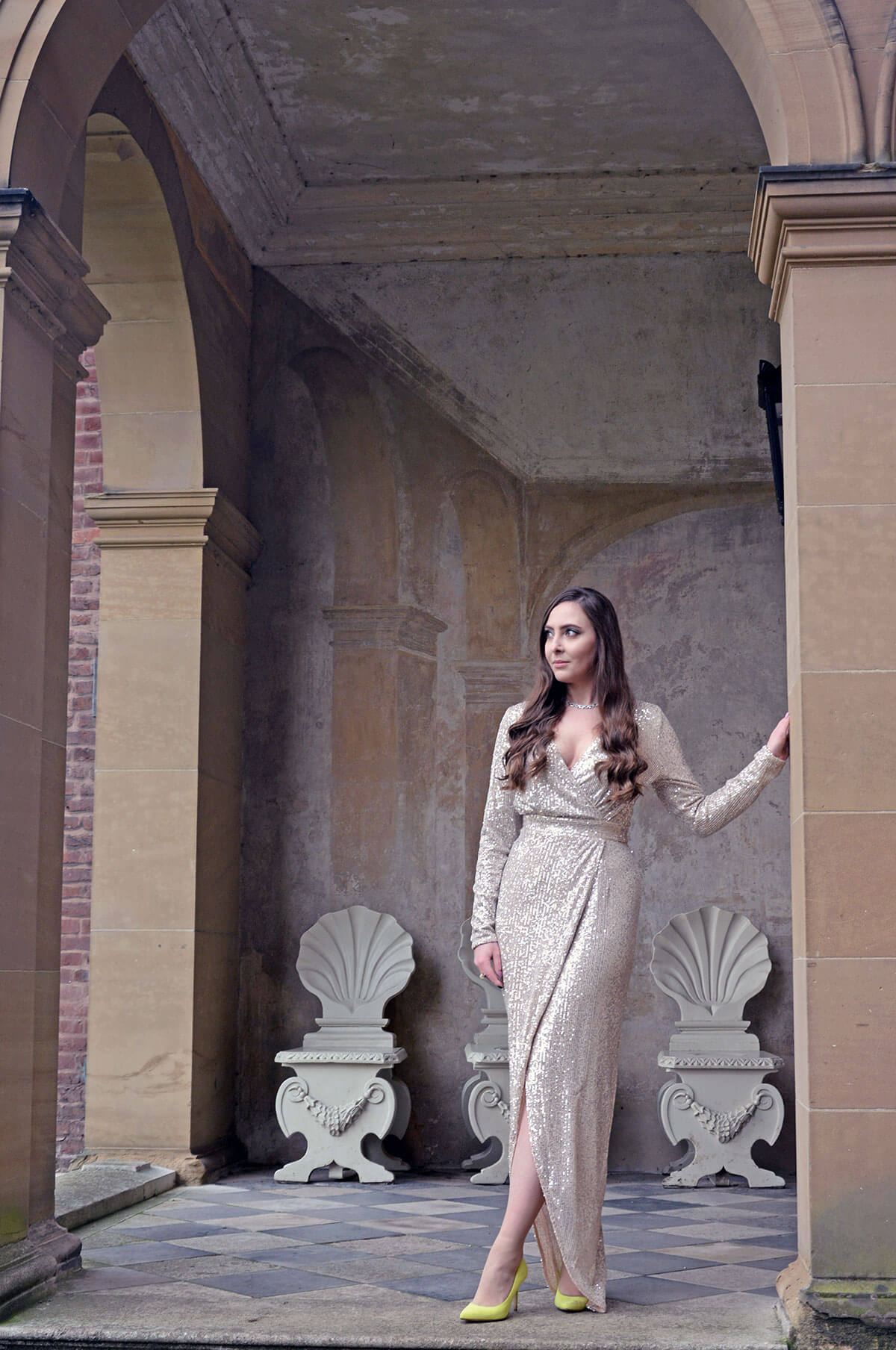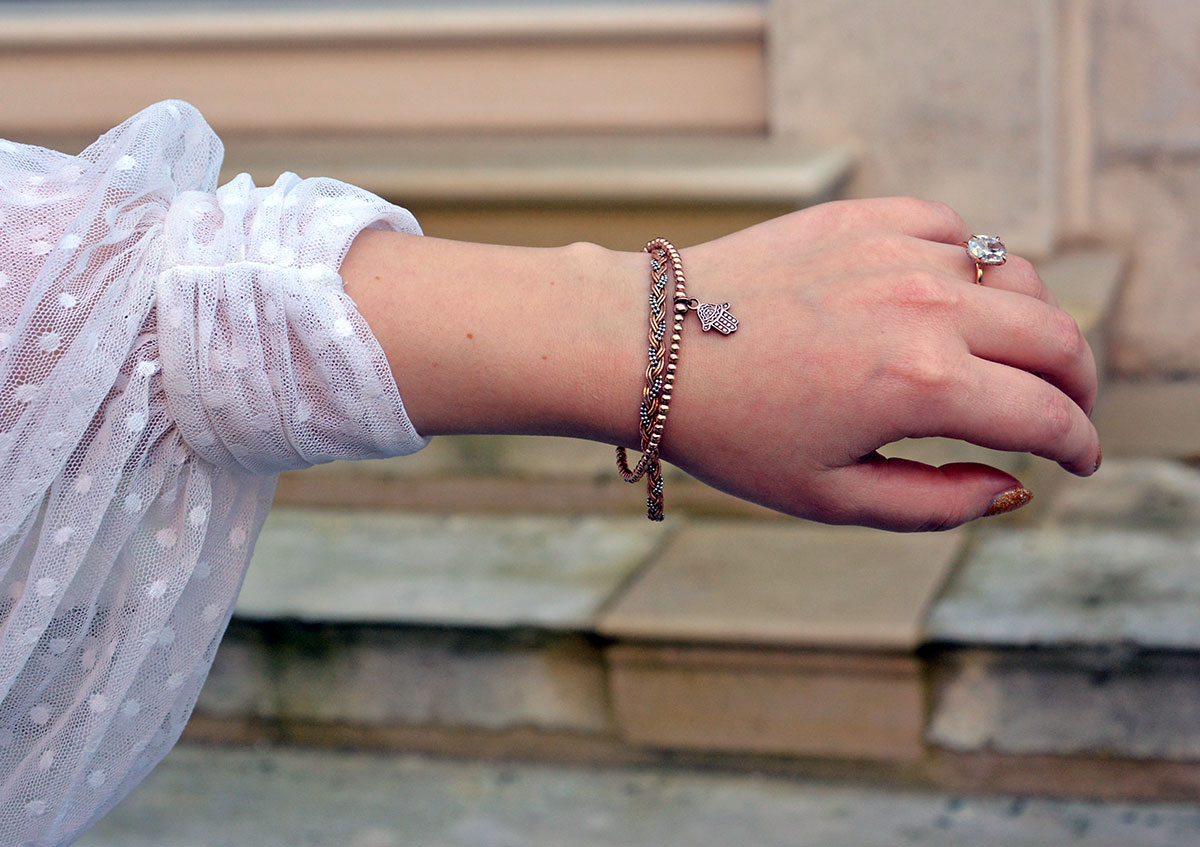The language of flowers
Keen on learning a new language? If yes, you’re in the right place. But wait, isn’t this an airy-fairy article on floral jewellery, and how it’s groundbreaking to wear it for spring? Also yes.
Wait, what?
Floral motifs in jewellery and beyond have been used as a secret language for decades. For instance, secret lovers could communicate through the act of gifting flowers. If the lady was to get red roses or tulips, this was the equivalent of her admirer saying “I love you”. If she was to get purple hyacinths, this would be much more problematic as they symbolised sorrow. This meant that a message about death or a warning was on the cards. Obviously, it would help if both parties spoke the floral language. It would be awkward otherwise, especially if the lady had a penchant for purple hyacinths, and just assumed her gentleman asked around about her favourite flowers to make her happy.
But where did all this petal chat come from?
Before TikTok: The origins of flower talk
Welcome to the Ottoman Empire. I know, you thought I’d take you straight to Victorian Britain. While the language of flowers has been popularised by the British during the Victorian era, like many other things that we see as British – think tea or the entirety of the British Museum – it originated elsewhere, and was taken.
So once again, welcome to the Ottoman Empire. Here, to kill time in the harems as well as communicate about things that weren’t anyone’s beeswax, a game started to take shape, which was inspired by Turkish secret selam (aka hello) language. This was a practice where you would code up your message by using words that rhymed with flowers as well as other objects. Being in the right place at the right time, Lady Mary Wortley Montagu, a poet in her own right plus wife to English ambassador to Turkey, spotted this practice and shared her findings with her pals back home in Britain. Atlas Obscura wrote: “Letters she wrote home from Constantinople in 1717 and 1718 … included a description of the Turkish secret flower language used by clever harem women to communicate under the noses of their guards.” And so a trend replicating this slowly started emerging among the British aristocracy. Very slowly.
It wasn’t until the French latched on to the flower talk trend, and published the first floral language dictionary in 1819, Le Langage des Fleurs by Madame Charlotte de la Tour (awesome pseudonym), that the world started to think this was as cool as we see using emojis today. This book was translated into English a year later. Within the next couple of years, there was a hundred different flower language dictionaries making rounds. The trend blossomed beautifully up until World War I, when romance took a back seat. Of course, you can find many floral dictionaries today, and I will give you a few good examples to totally lotus you up, aka enlighten:
| The Secret Language of Flowers | |
|---|---|
| Aloe | Grief or superstition |
| Begonia | Beware, dark thoughts |
| Basil | Hatred |
| Bluebell | Constancy or humility |
| Camomile | Energy in adversity |
| Chrysanthemum, yellow | Slighted Love |
| Chrysanthemum, white | Truth |
| Daffodil | Regard |
| Dahlia | Instability |
| Daisy | Innocence |
| Dill | Powerful against evil |
| Fern | Sincerity, humility and magic |
| Forget-me-not | True love memories, do not forget me |
| Fleur-de-Lis | Flame, I burn |
| Grass | Submission, utility |
| Holly | Foresight |
| Hyacinth, Purple | Sorrow |
| Hydrangea | Heartlessness |
| Iris | Message |
| Ivy | Fidelity, marriage |
| Jasmine | Amiability |
| Laurel | Glory |
| Lily of the Valley | Return of happiness |
| Lotus | Enlightenment |
| Magnolia | Love of nature |
| Narcissus | Egotism |
| Olive | Peace |
| Poppy, red | Consolation |
| Rose | Love |
| Sunflower | Haughtiness |
| Tulip, red | Declaration of love |
Sources: Gardening Channel and Almanac.
Floral jewellery: A brief history
While floral motifs in jewellery have been present throughout history, donned by the ancients, taken into medieval ages, the baroque epoch, and into the classical period (Georgian in the UK), it was the legacy of Victorian Britain in particular that influenced our fascination with flowers in jewellery globally today. The rise of technology and larger-scale manufacturing under Queen Victoria unleashed design ideas that jewellers simply couldn’t share with the wider public before. Remember, jewellery used to be a luxury only for the elite few.
Still sticking with the Victorian times, floral jewellery was a huge trend with its own secret language. It went from joyous and romantic into supporting the mourning style. After this, flowers slowly started fading out from mainstream jewellery in favour of other, easier for factories to make motifs. However, the Art Nouveau movement, prevalent in 1880-1910, opposed the manufacture-it-all solution, and put value into intricate, human workmanship that kept the floral muse alive. This slow descent was further reflected in the pieces from the Edwardian era, where the language of flowers started joining the ranks of latin and aramaic and slowly die out.
What followed was the Art Deco movement. Known for putting emphasis on geometry, symmetry and futurism, florals became an incidental motif, for instance if geometric shapes happened to form a flower, then so be it. Art Deco overall favoured masculinity and strictness in design, however florals, particularly the lotus flower, did creep into the harsh geometry, buoyed by the Egyptomania trend after the discovery of King Tutankhamun’s tomb in 1922.
Then World War 2 happened. There was not a flower in sight through times of extreme suffering. A great summary and reflection of the era is a song by Marlene Dietrich that she sang roughly 20 years after World War 2 ended, asking “Sag’ mir, wo die Blumen sind” (Tell me, where have all the flowers gone?). Nevertheless, flowers started popping up again in cheaper costume jewellery, as the war left resources and fine materials scarce, not to mention put fine jewellery somewhere at the bottom of the must-have list. Cheaper materials meant bigger motifs, so the rise of huge plastic petal coloured brooches, rings, pendants became a form of therapy – that it’s going to be ok, that we’re allowed to feel some sort of happiness now. Hyperbolic jewellery developed into the 50s and psychedelic 60s, with florals travelling up into our hair in the hippie 70s.
Floral jewellery today
Modern floral jewellery is in fact groundbreaking, spring or no spring. The hunger to replicate intricate shapes of flowers in fine metals and precious stones has forced jewellers to propel their engineering imagination: Come up with invisible settings, sculpt never created before silhouettes, use new materials and techniques. This also goes for art movements: the brutalists, industrialists, expressionists, surrealists et al – not one of these schools has been above showcasing florals in jewellery through their unique lens.
Flowers will always be our muse. If one day this will no longer be the case, it will be the day we lost our humanity. But let’s not end on a begonia (dark thought). Floral jewellery will always be a bluebell (constancy) in our self-expression, so no need to be a columbine plant (foolish) and think that it’s going anywhere. And that’s the whole white chrysanthemum (truth).
In the images I am wearing a sterling silver pair of earrings, set with cubic zirconia and green ceramic roses.

